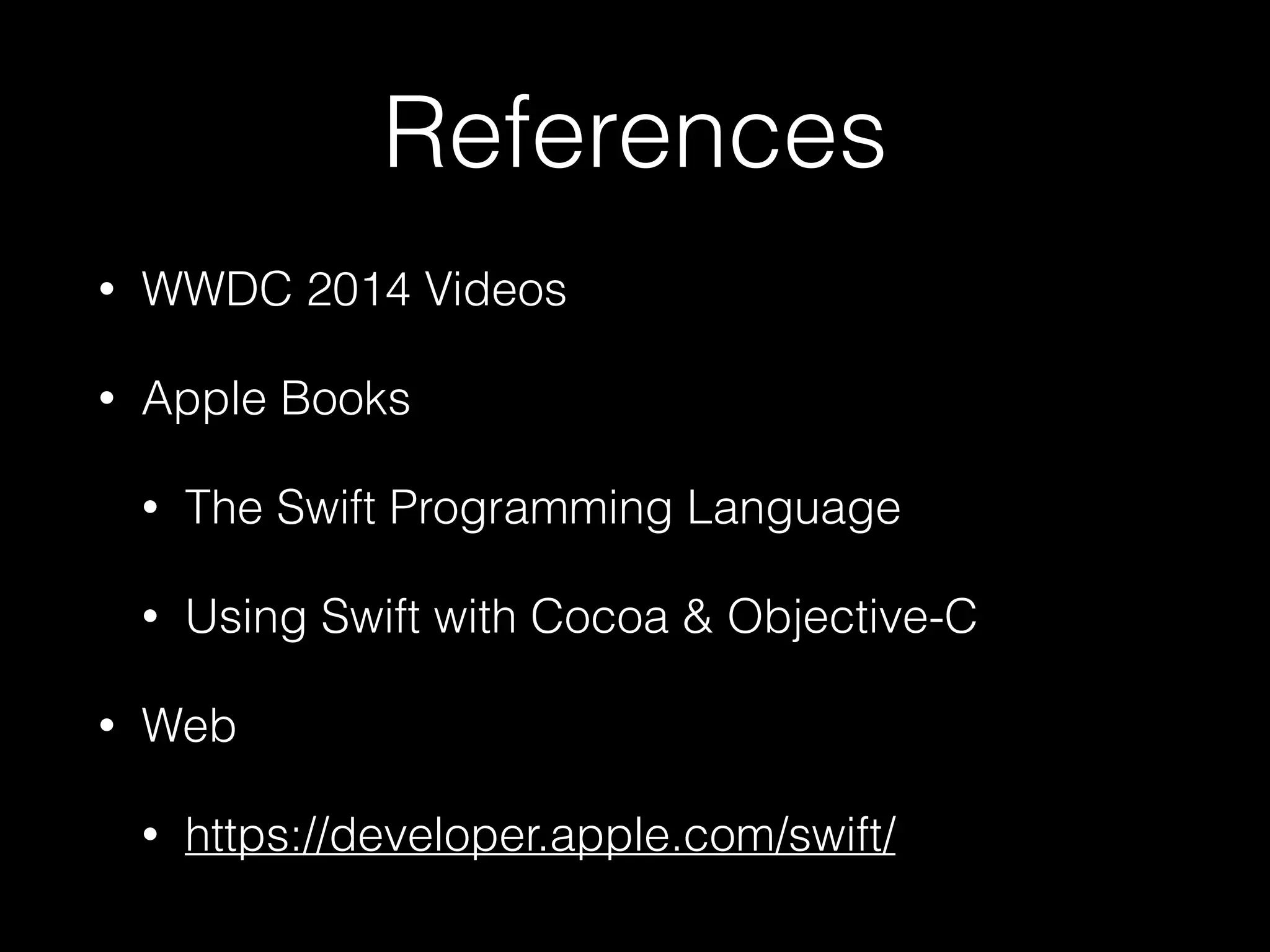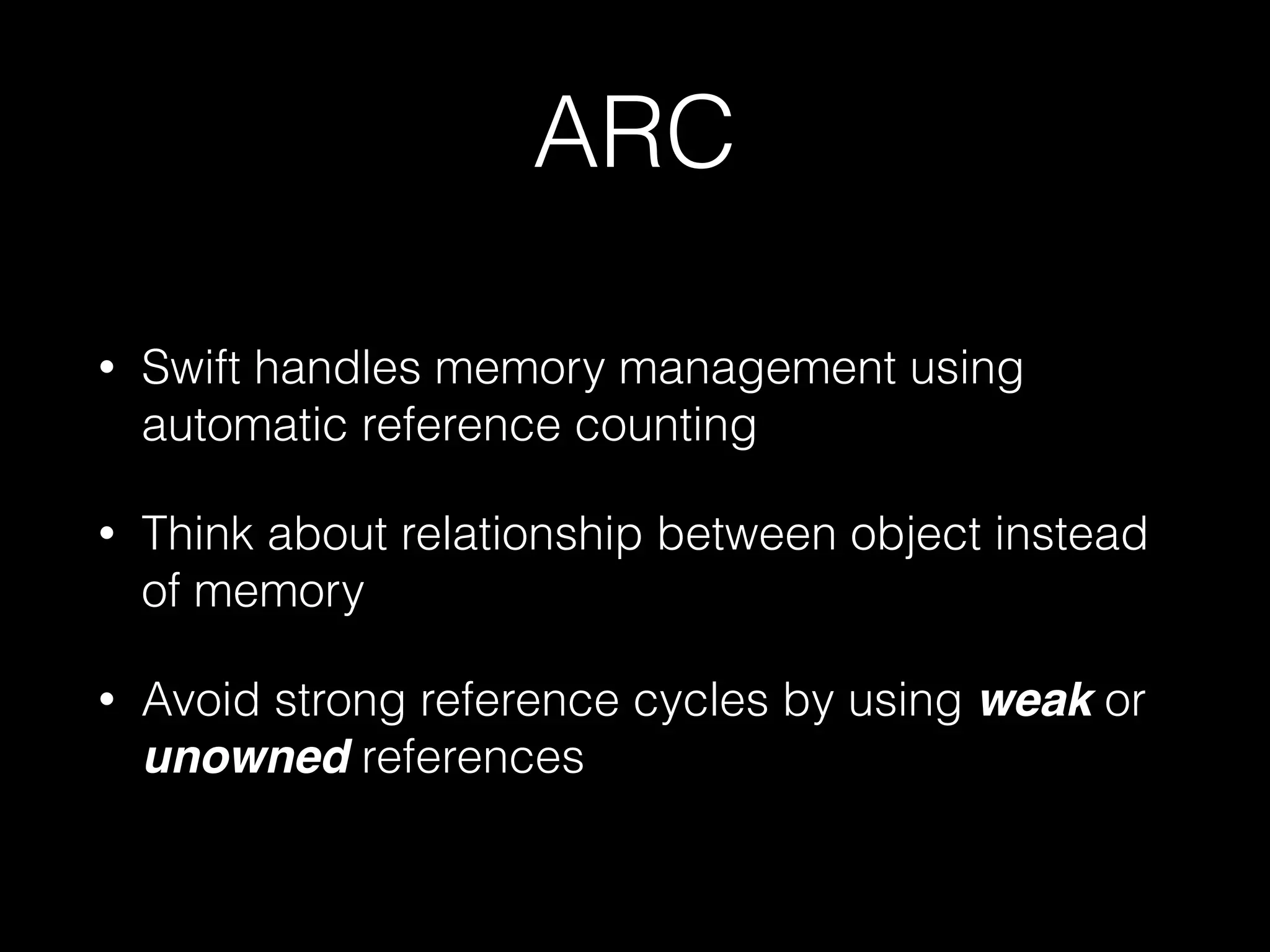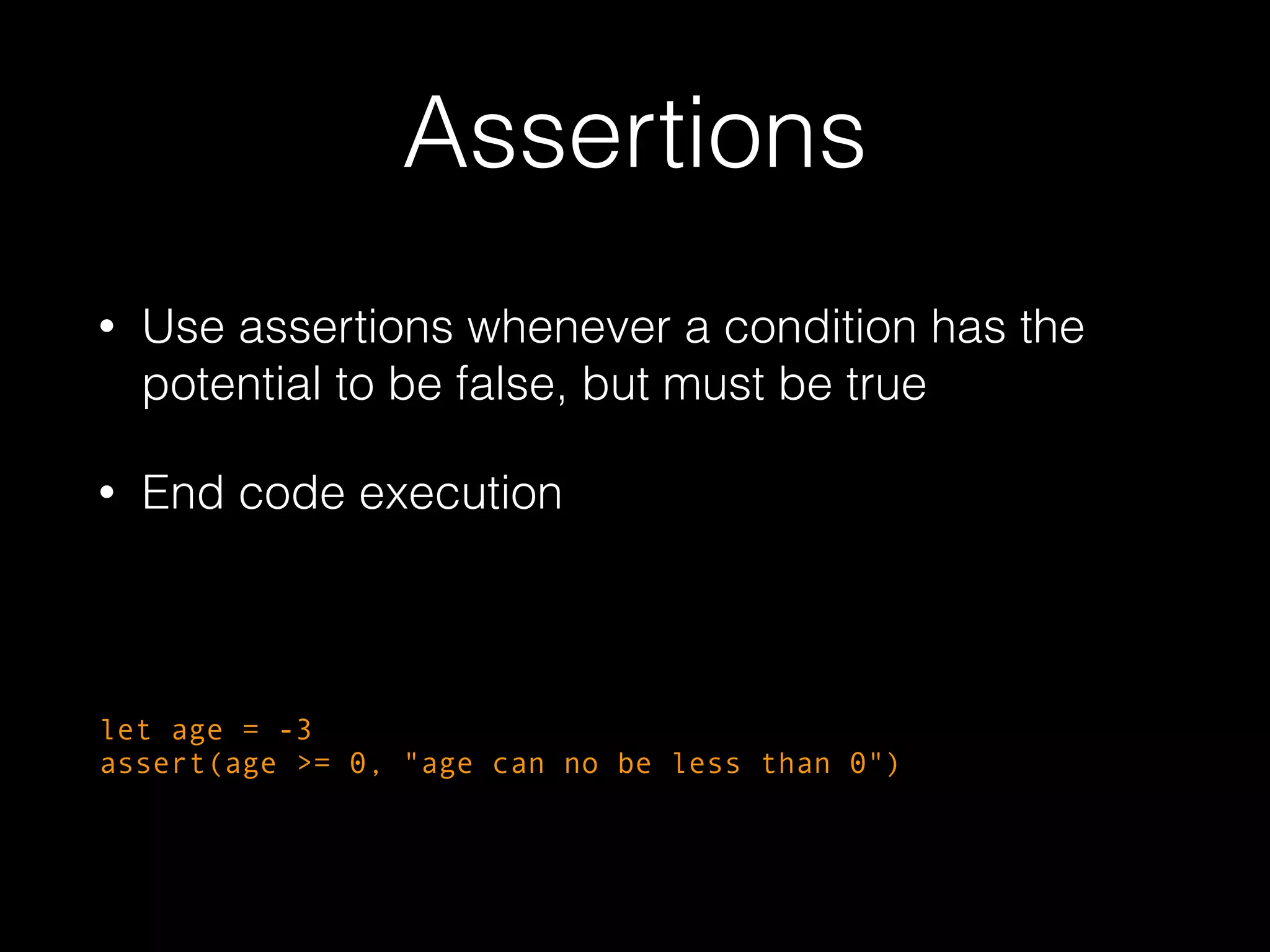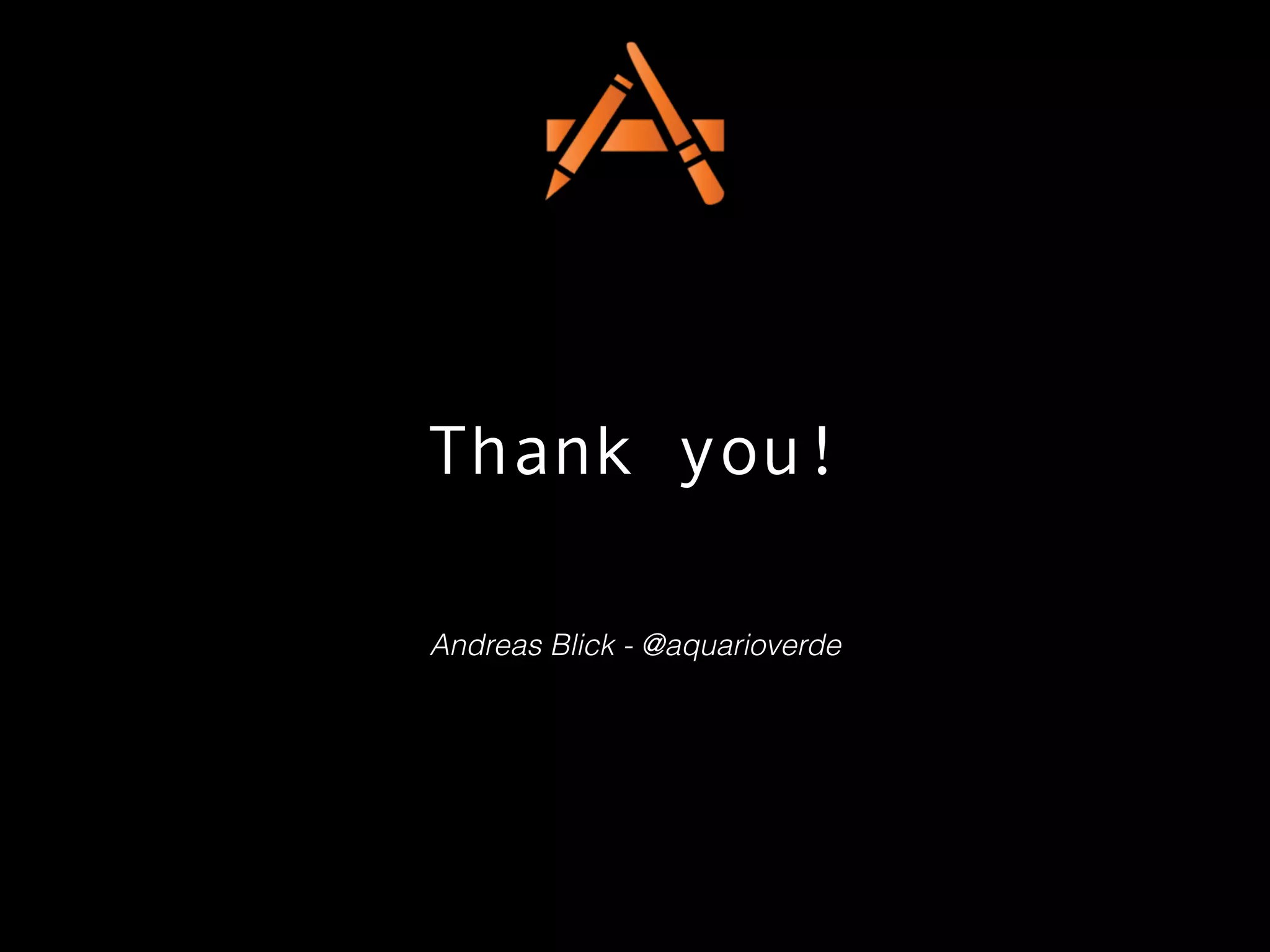The document provides an overview of the Swift programming language, introducing key concepts like variables and constants, strings, numbers, arrays, dictionaries, tuples, loops, conditionals, functions, closures, classes, properties, methods, initialization, and inheritance. It describes Swift as a modern language that builds on C and Objective-C without compatibility constraints, and supports safe patterns, modern features, and seamless access to Cocoa frameworks.
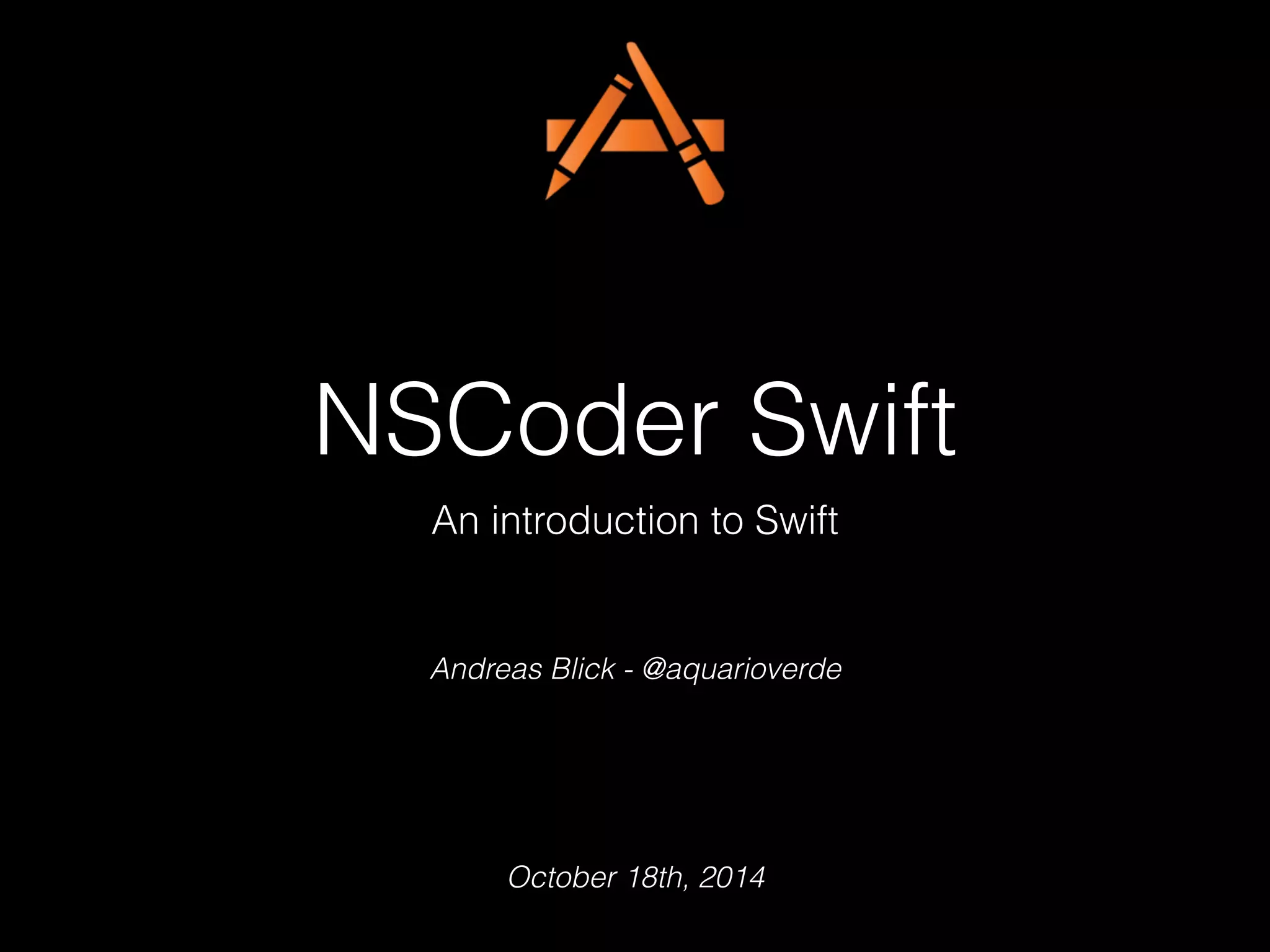
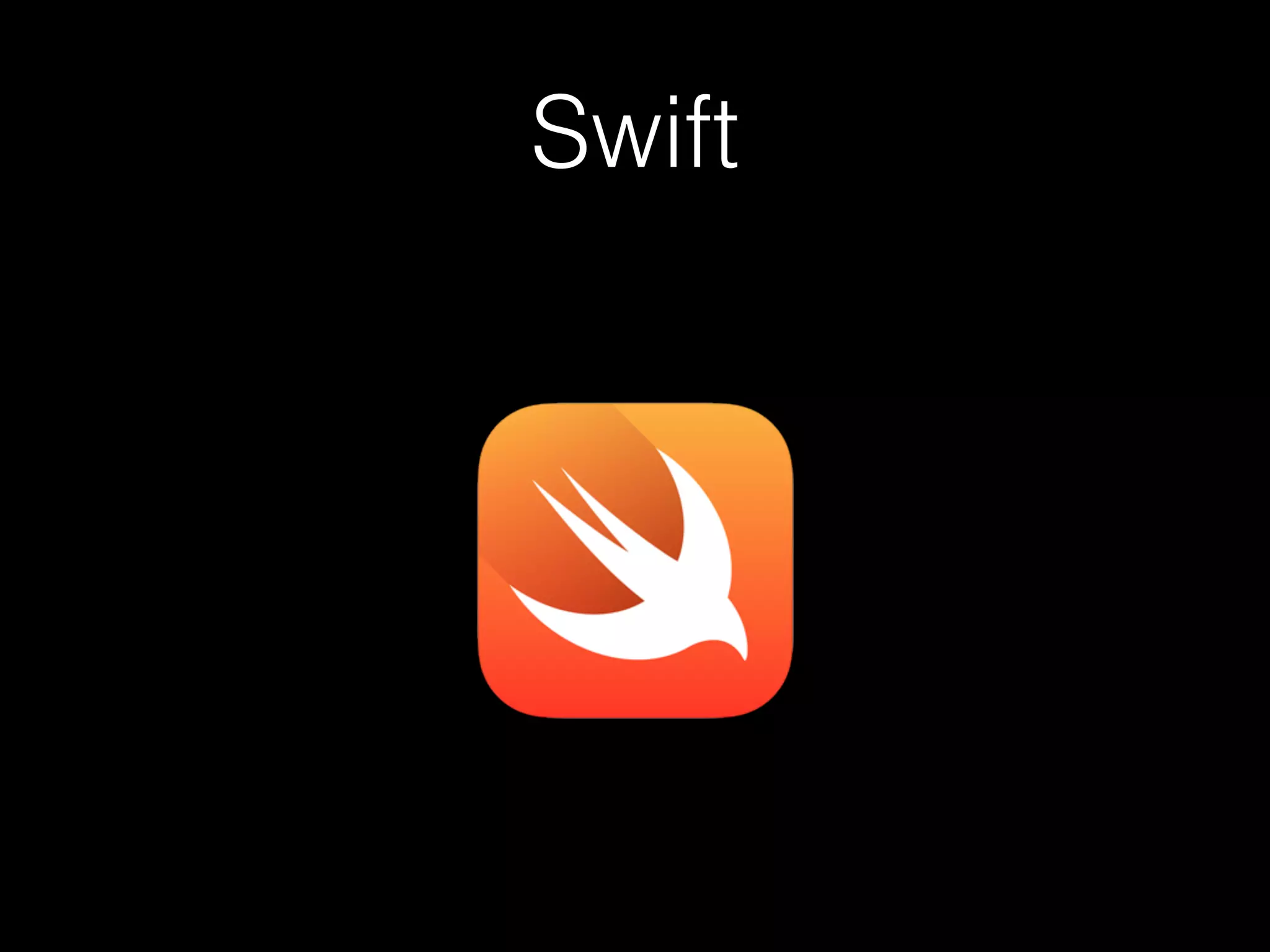
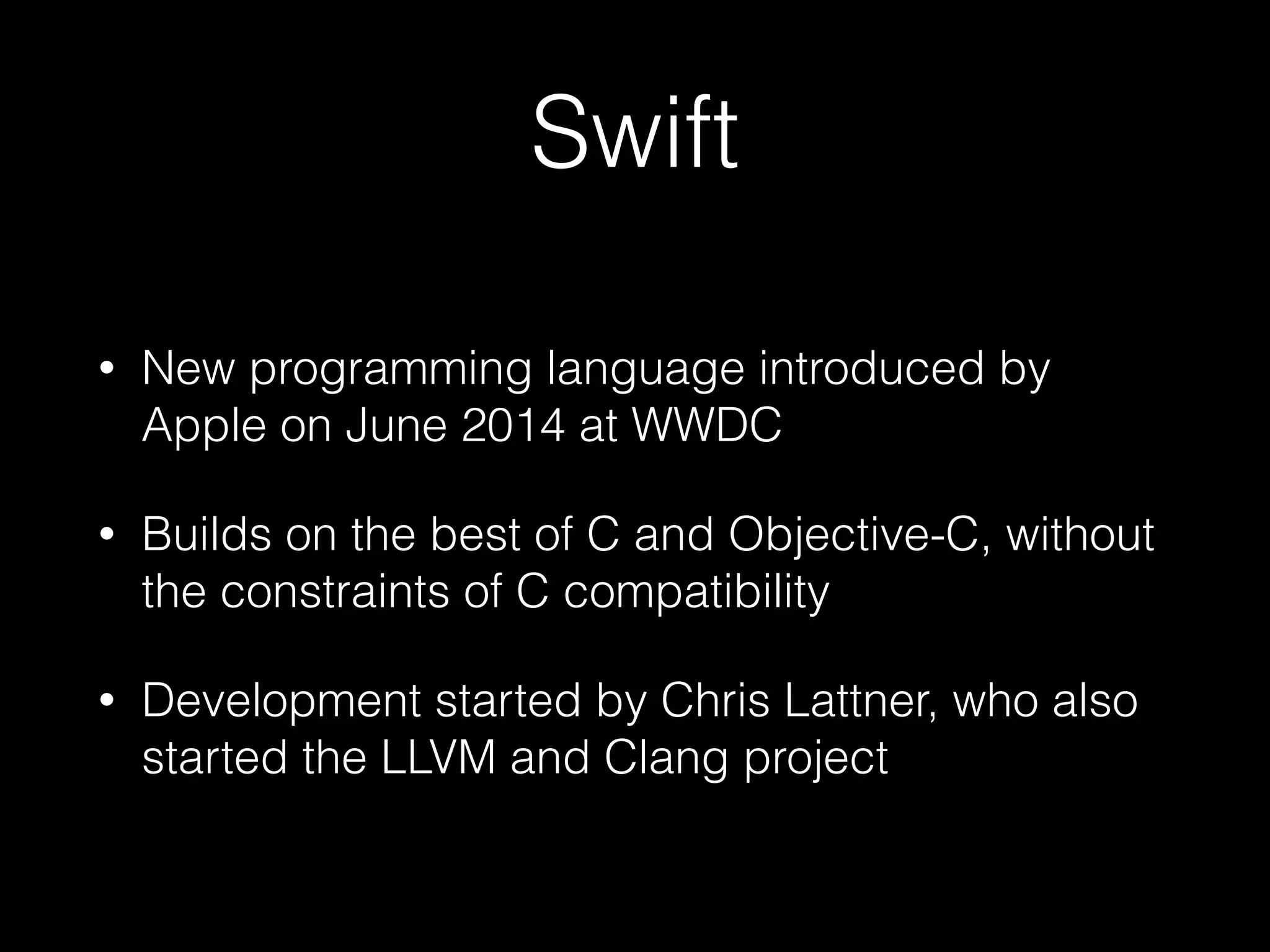
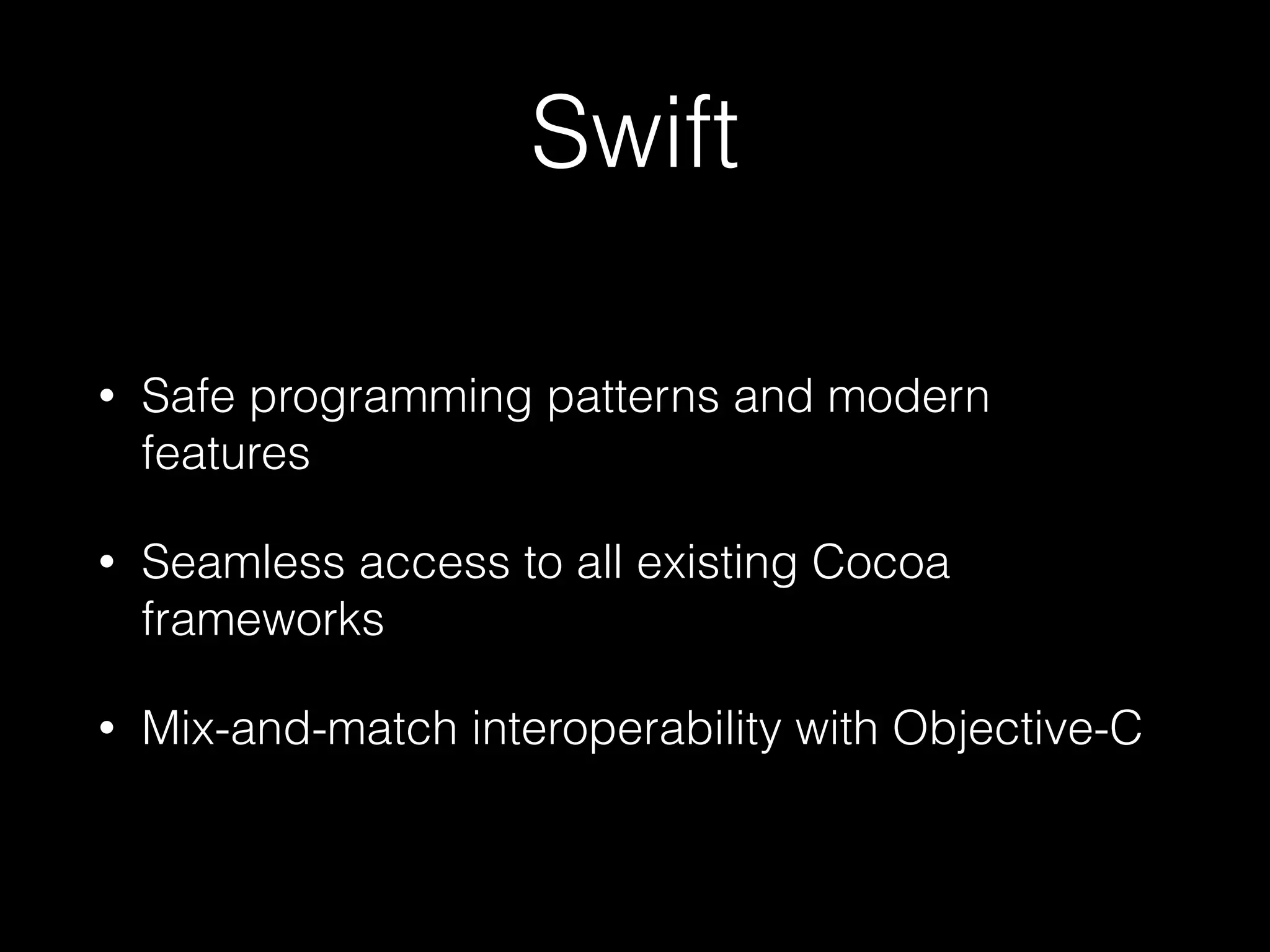
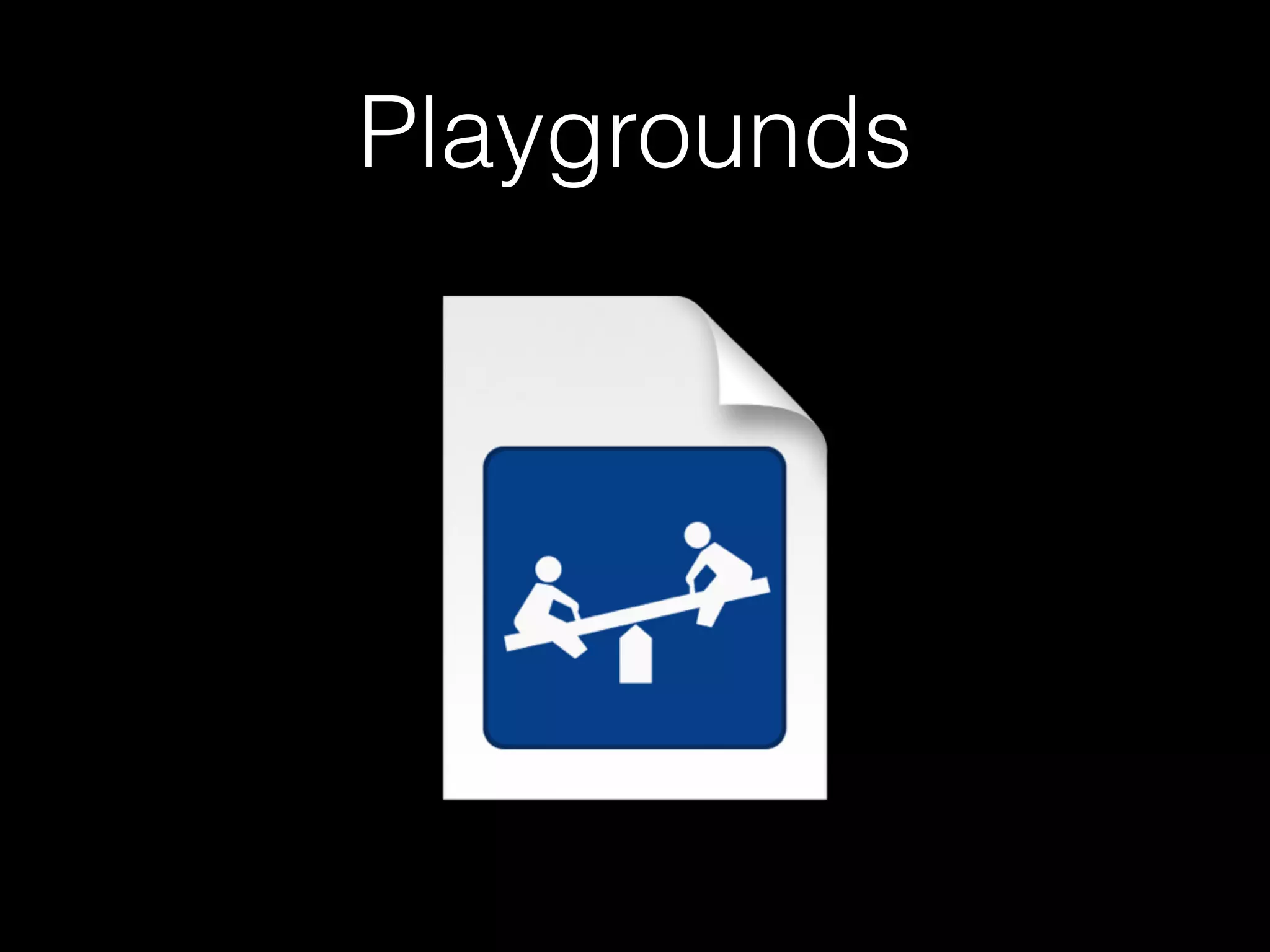
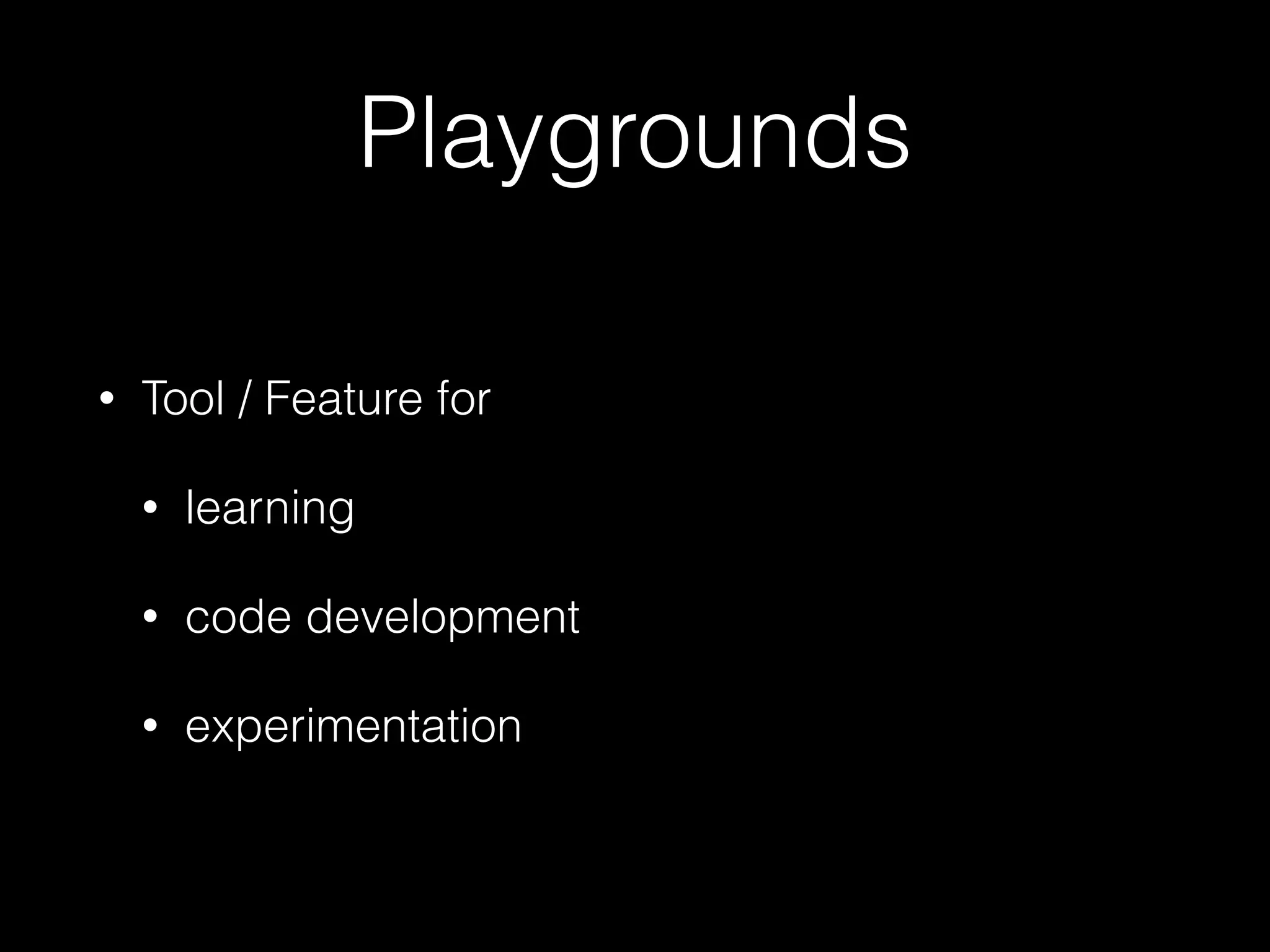
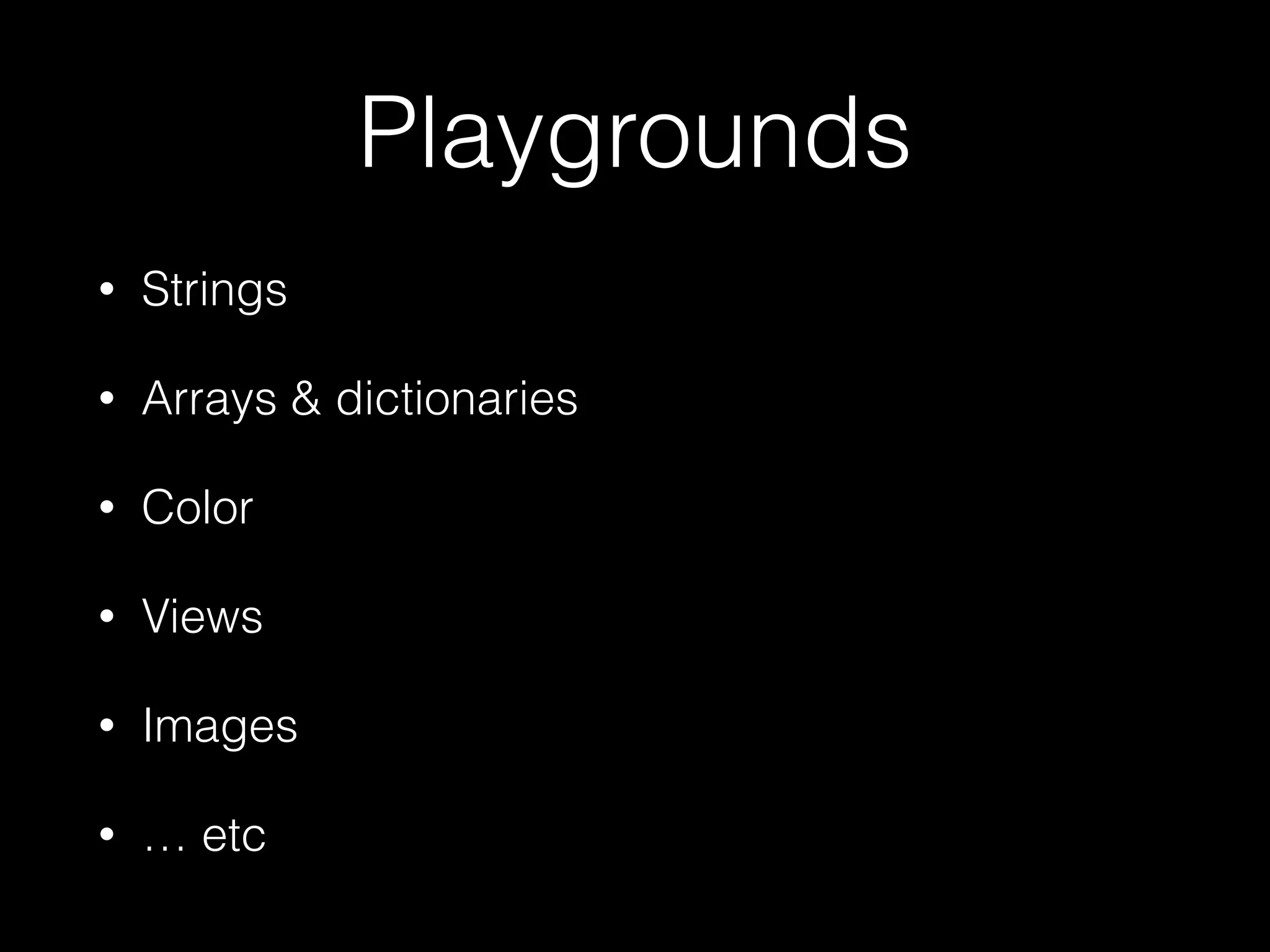
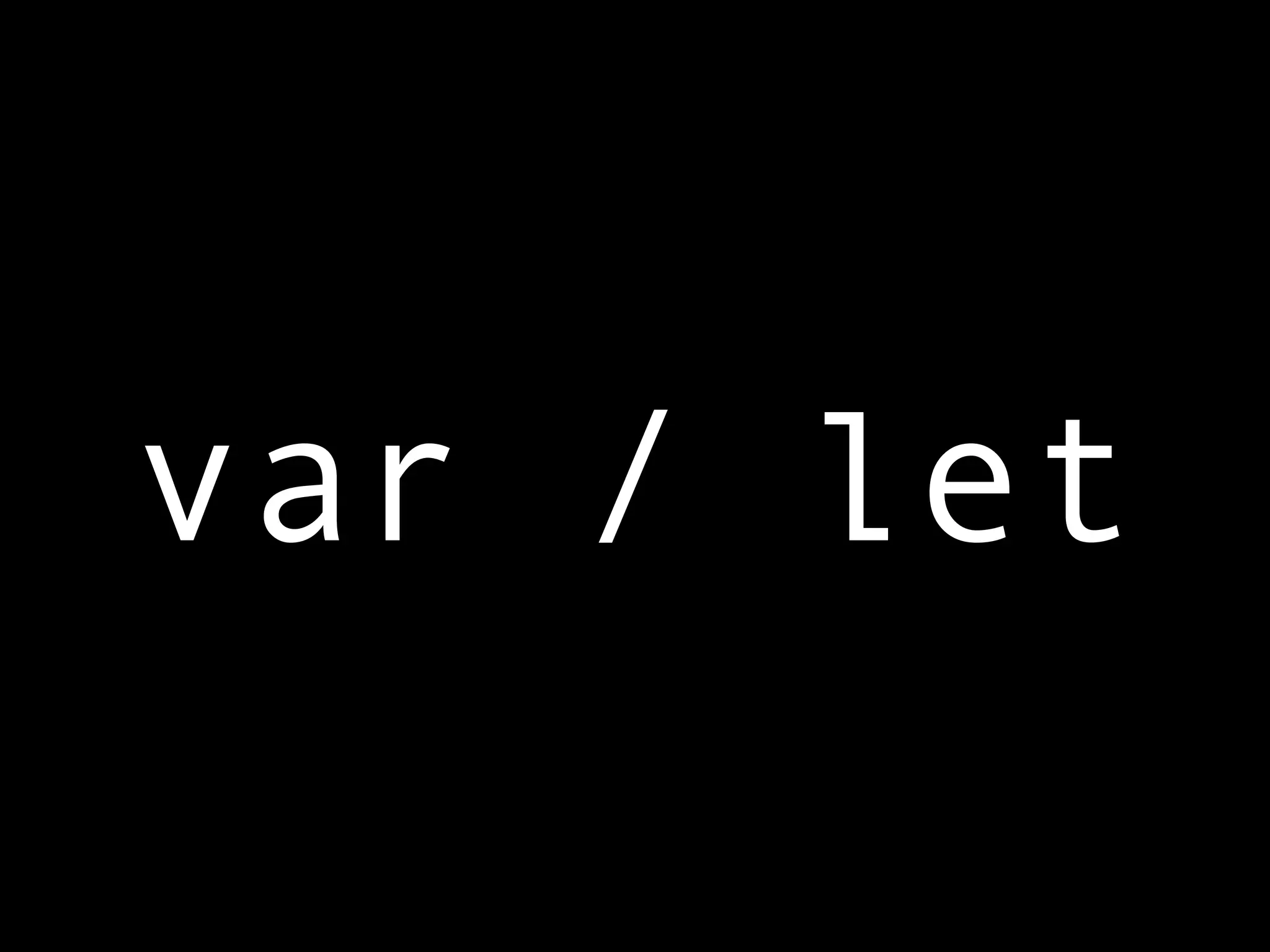
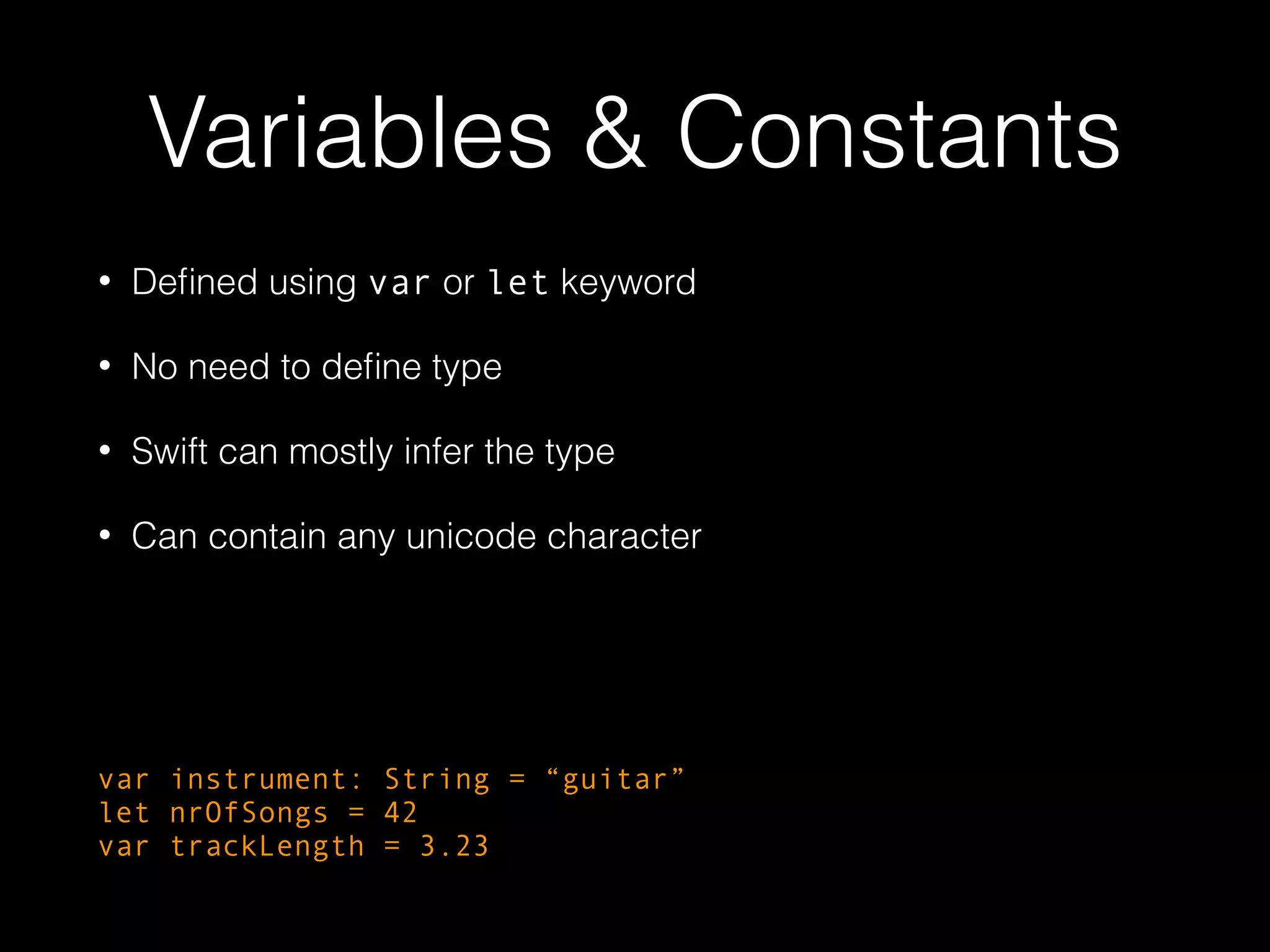
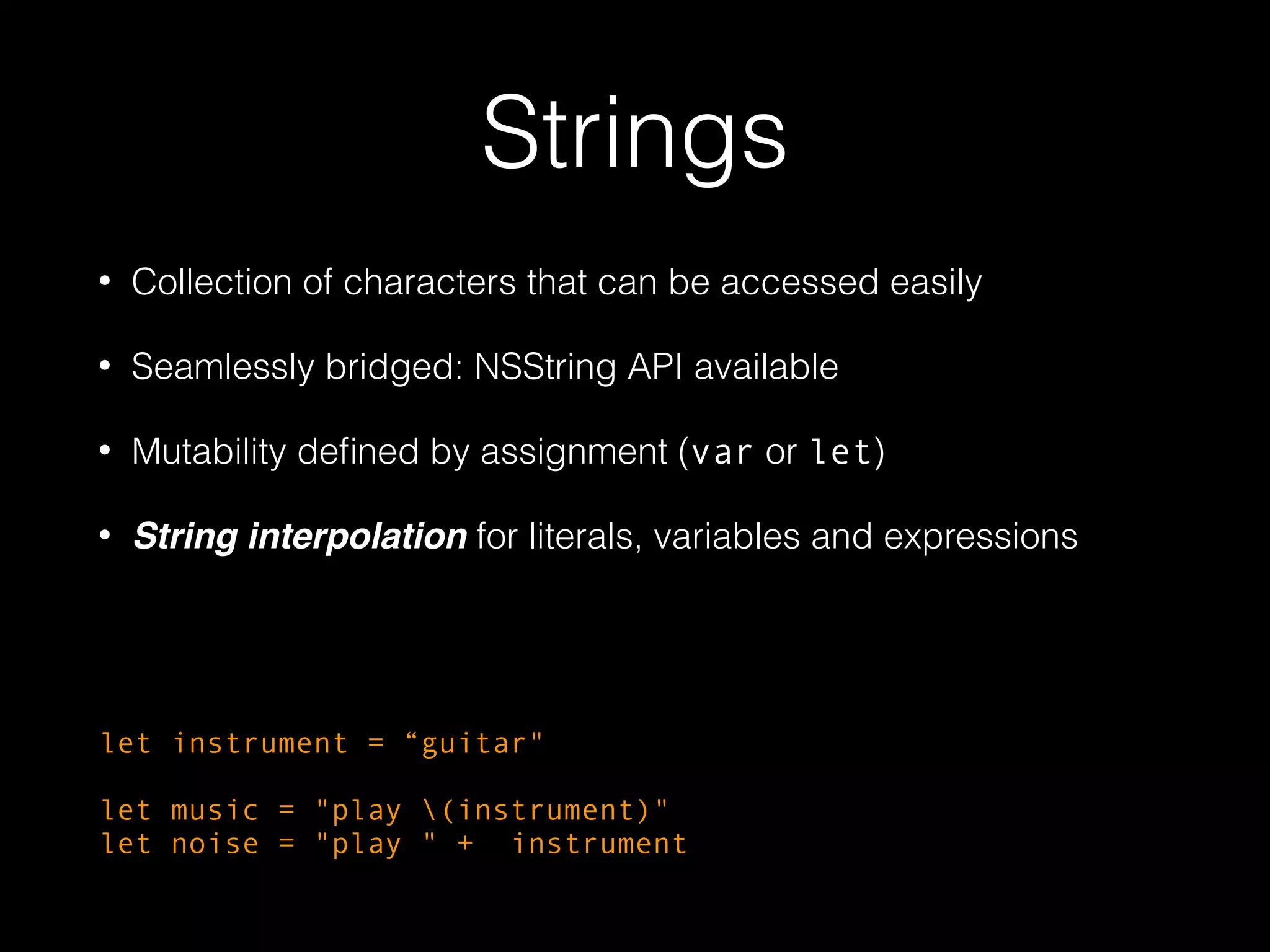
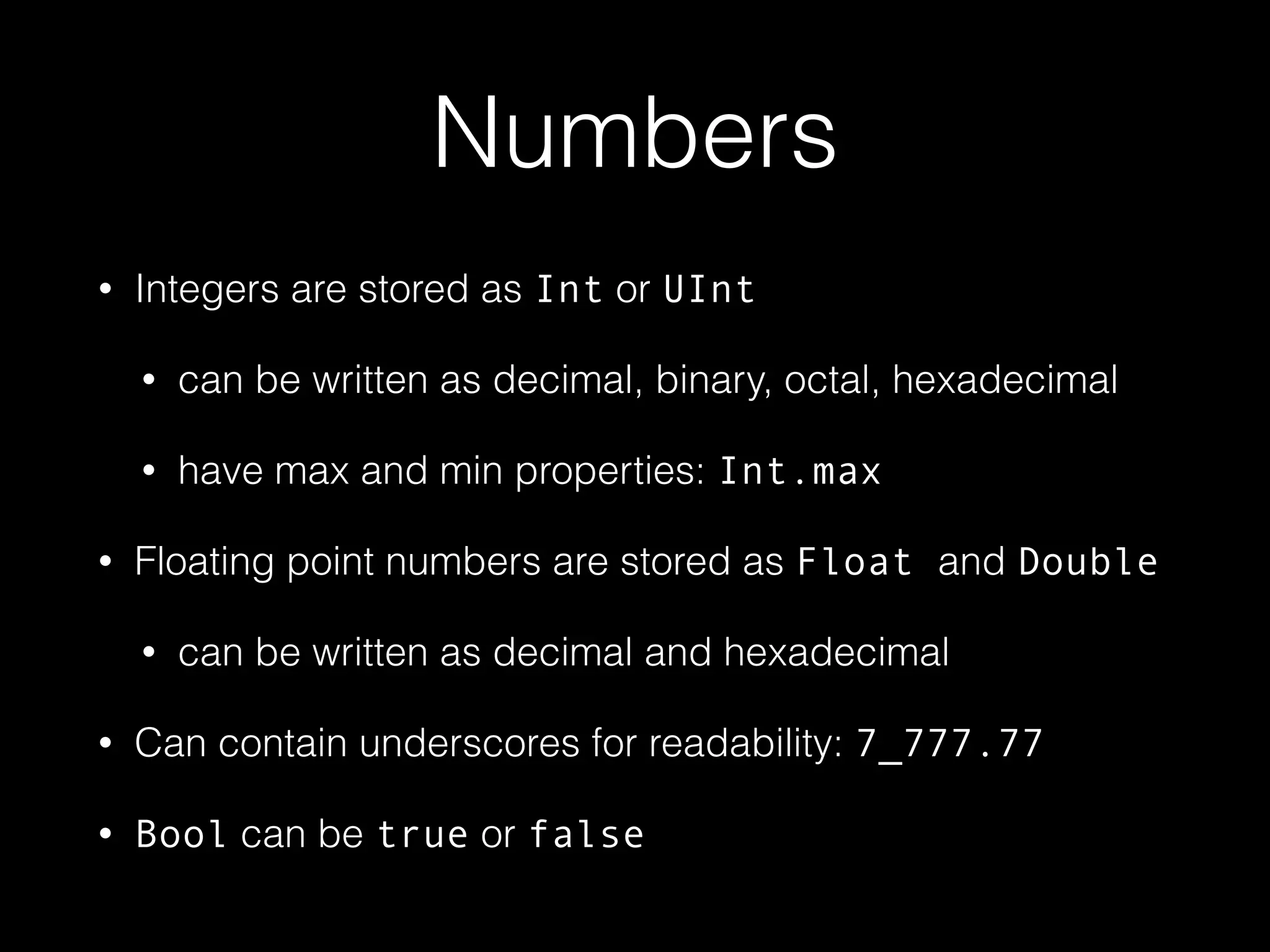
![Arrays
• Stores ordered list of multiple values
• Arrays are type specific
• Accessed using properties, methods or subscripting
var numbers: Array<Int> = Array<Int>()
var numbers: [Int] = [Int]()
!
numbers = [1,2,3]
numbers = [Int](count:7,repeatedValue:0]](https://image.slidesharecdn.com/nscoderswiftintroduction-141018181050-conversion-gate01/75/NSCoder-Swift-An-Introduction-to-Swift-12-2048.jpg)
![Dictionaries
• Containers that store multiple key-value pairs of the
same type
• Accessed using properties, methods or subscripting
• Assigning nil as a value removes it
var numbers:Dictionary<Int,String> = Dictionary<Int,String>()
!
numbers = [1:“One”,2:“Two”,3:”Three”]](https://image.slidesharecdn.com/nscoderswiftintroduction-141018181050-conversion-gate01/75/NSCoder-Swift-An-Introduction-to-Swift-13-2048.jpg)
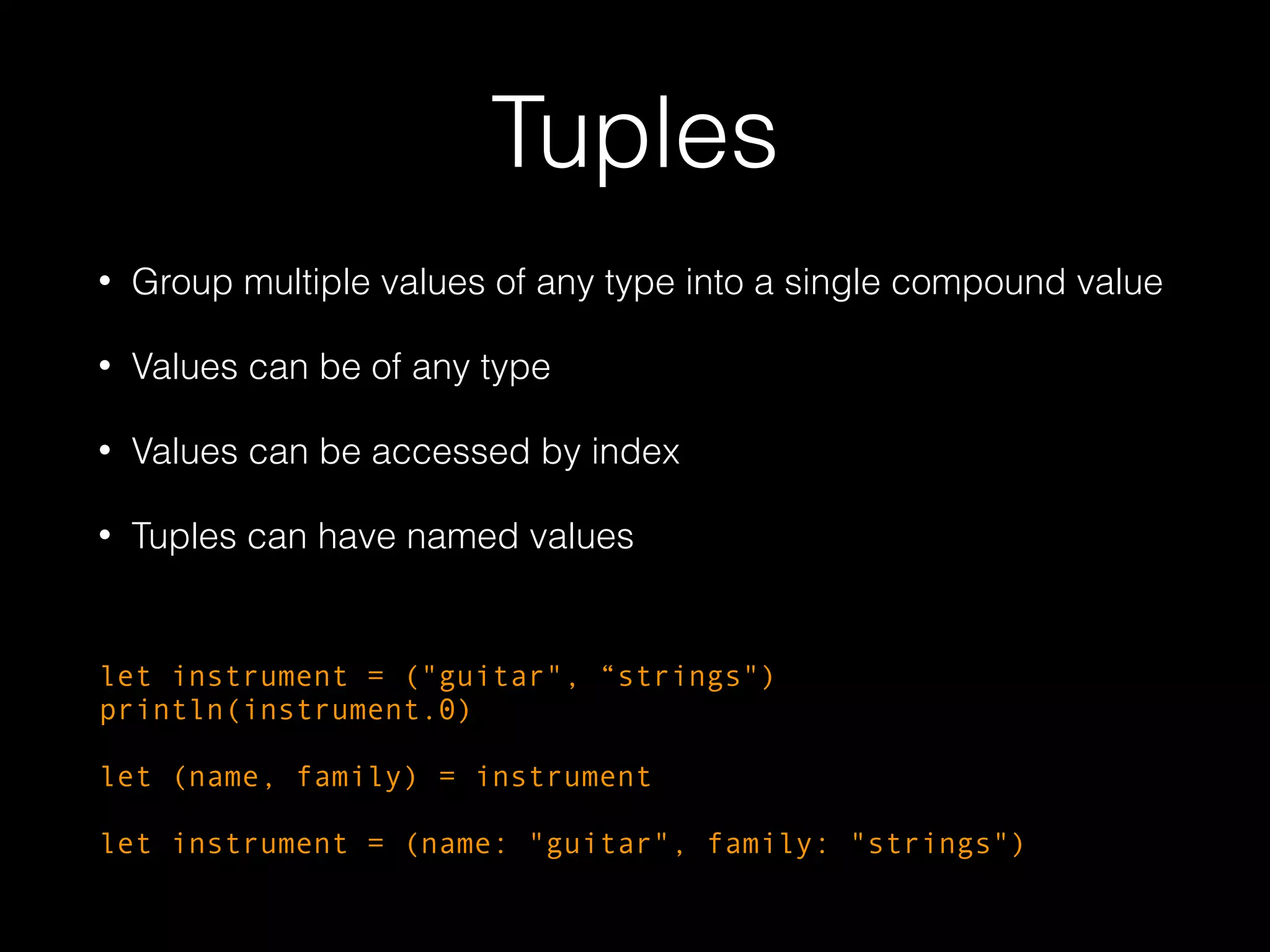
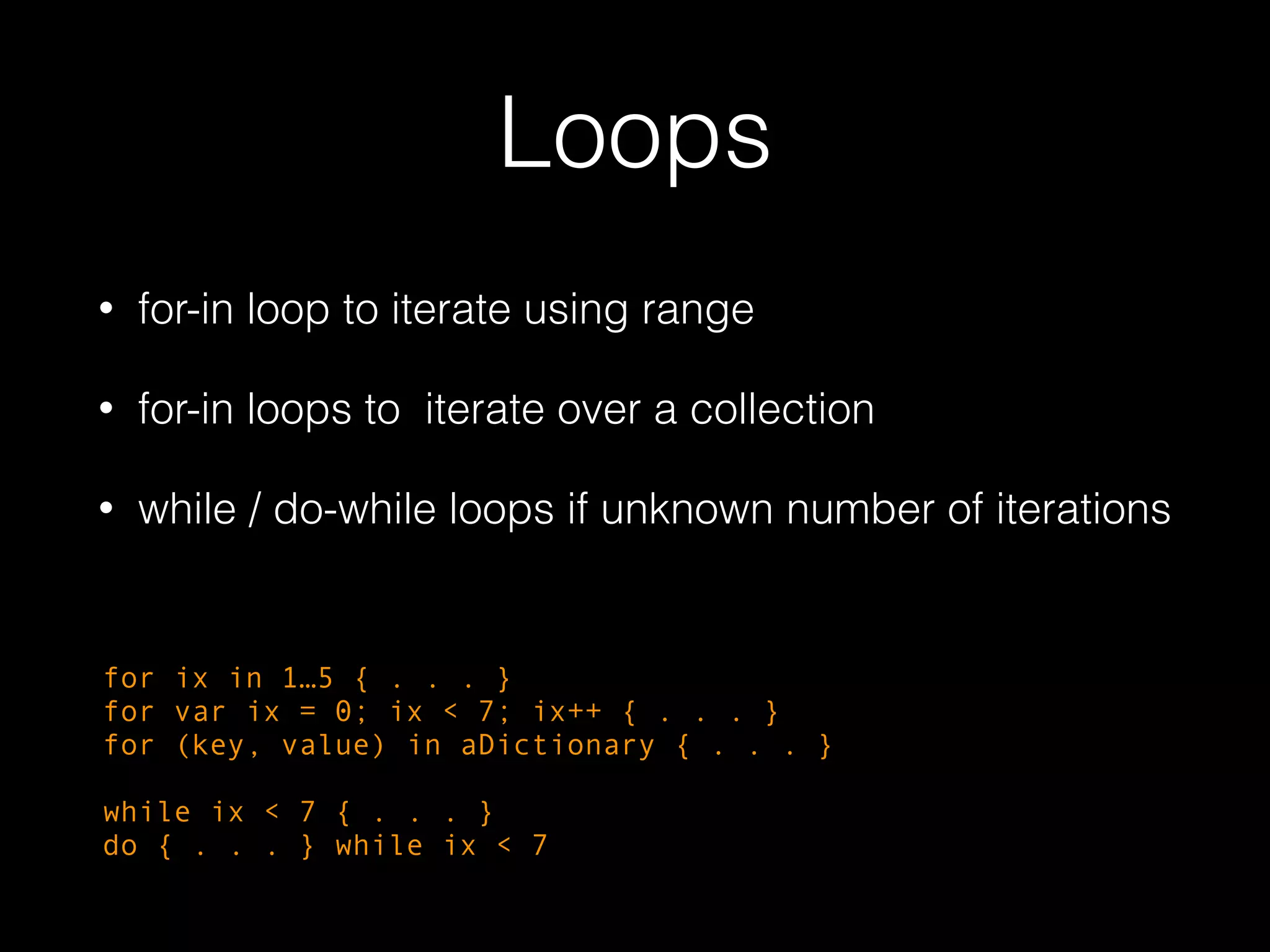
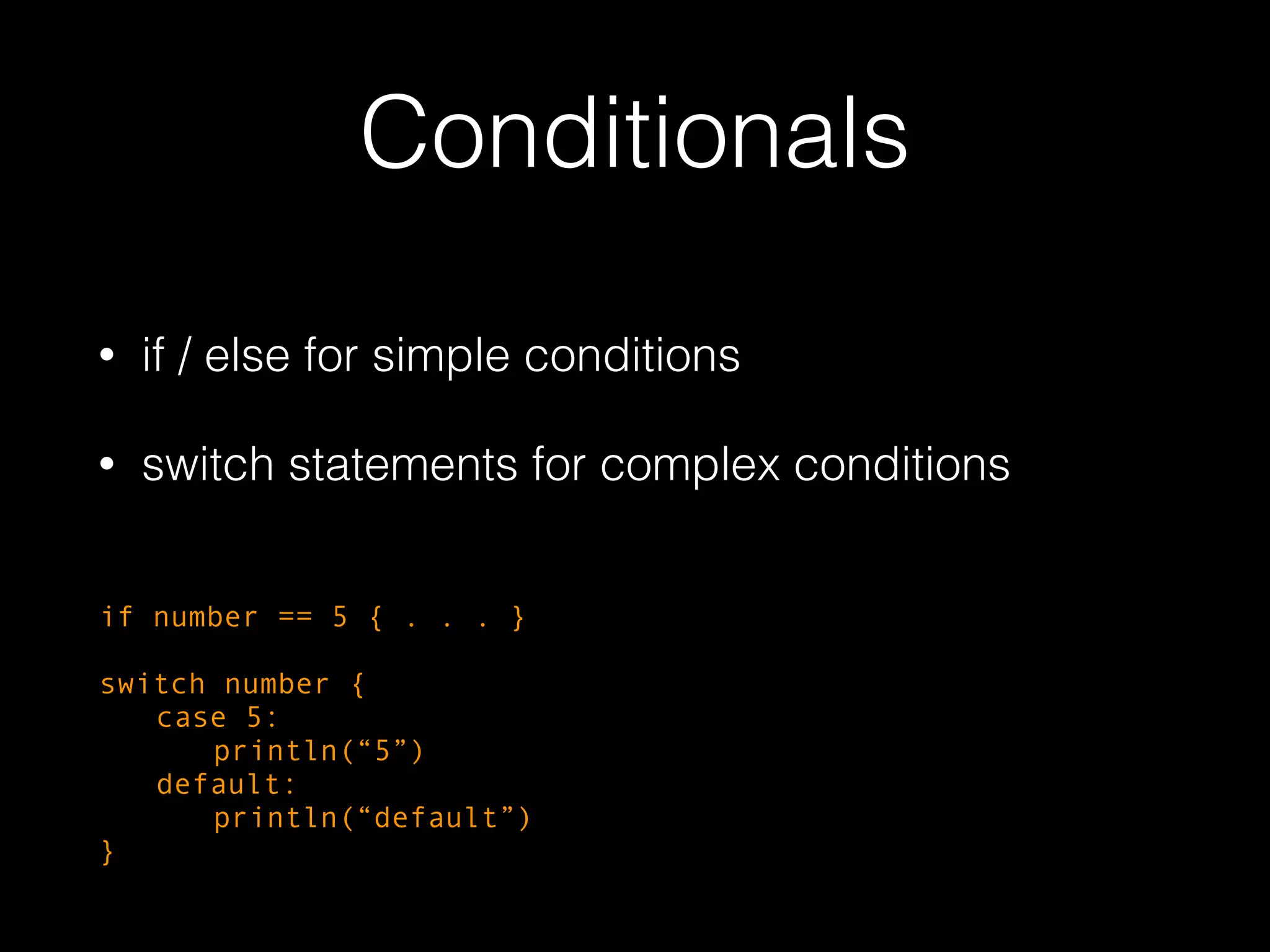
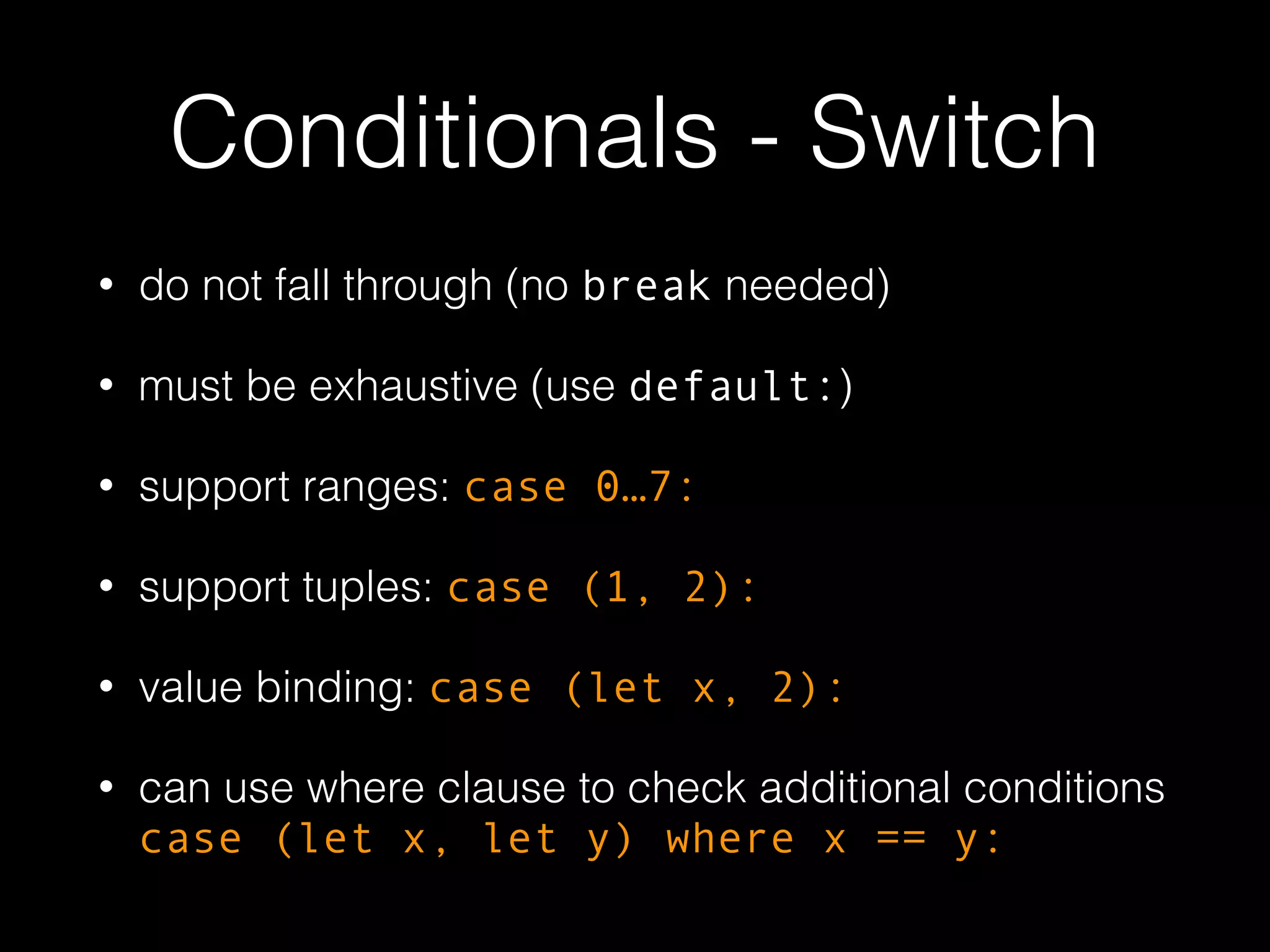
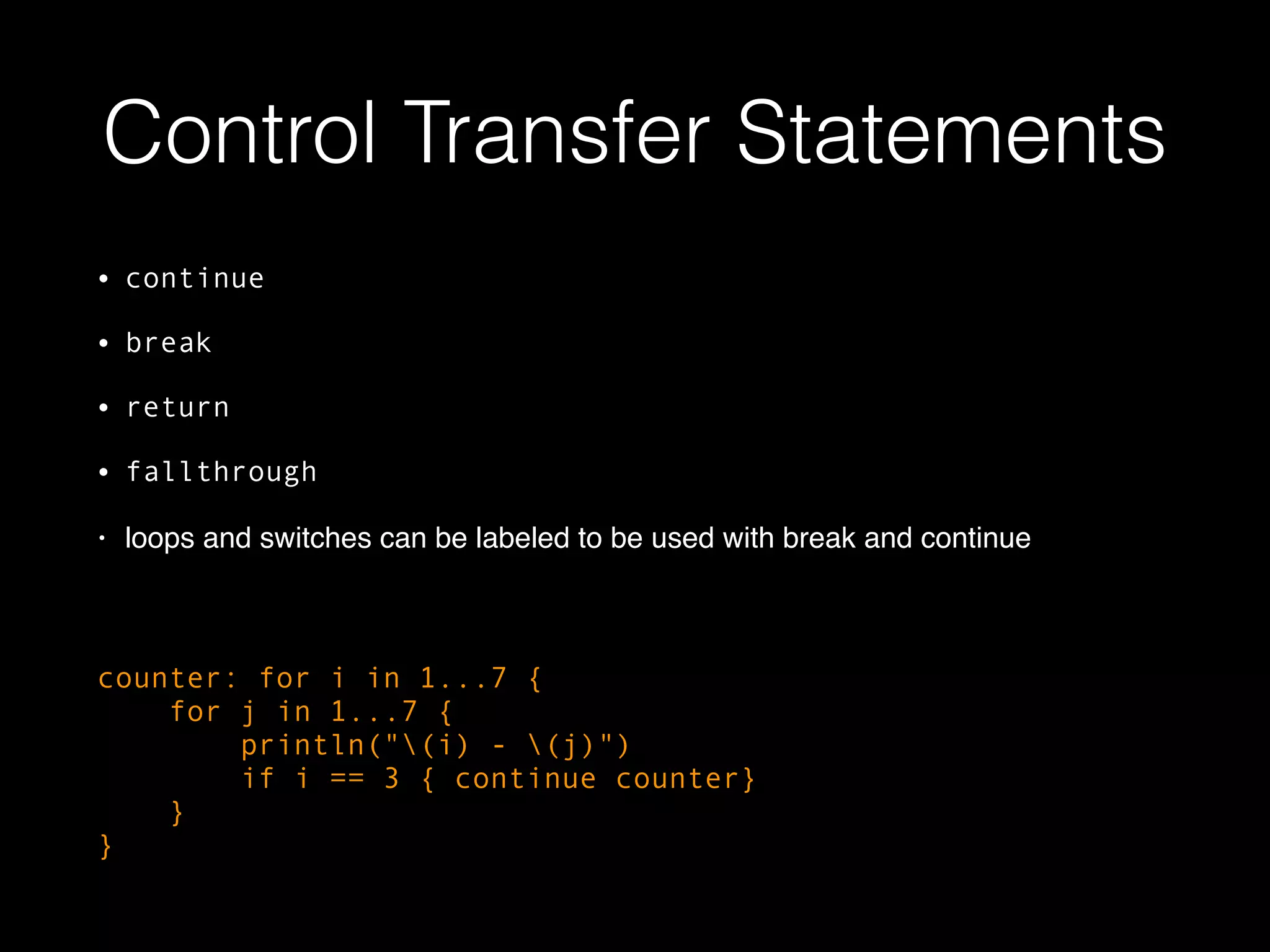

![Optionals
• Used where a value might be missing by adding a ? sign
• Similar to nil in Objective-C, but can be used on any type
• non optionals can not be nil
• Optionals can implicitly be unwrapped by adding a ! sign (forced
unwrapping)
let instruments = ["guitar" : 6, "bass": 4, “ukulele”: “8”]
let nrOfStrings: Int? = instruments[“guitar"]
!
if nrOfStrings != nil {
println(nrOfStrings!)
} else { . . . }](https://image.slidesharecdn.com/nscoderswiftintroduction-141018181050-conversion-gate01/75/NSCoder-Swift-An-Introduction-to-Swift-20-2048.jpg)
![Optionals
• Use optional binding to find out if an optional
contains a value
let instruments = ["guitar" : 6, "bass": 4, “ukulele”: “8”]
let nrOfStrings: Int? = instruments[“guitar"]
!
if let nrOfStrings = instruments["guitar"] {
println(nrOfStrings)
} else { . . . }
• Use optional chaining when a value might be nil
let familyName = guitar.family?.name?](https://image.slidesharecdn.com/nscoderswiftintroduction-141018181050-conversion-gate01/75/NSCoder-Swift-An-Introduction-to-Swift-21-2048.jpg)
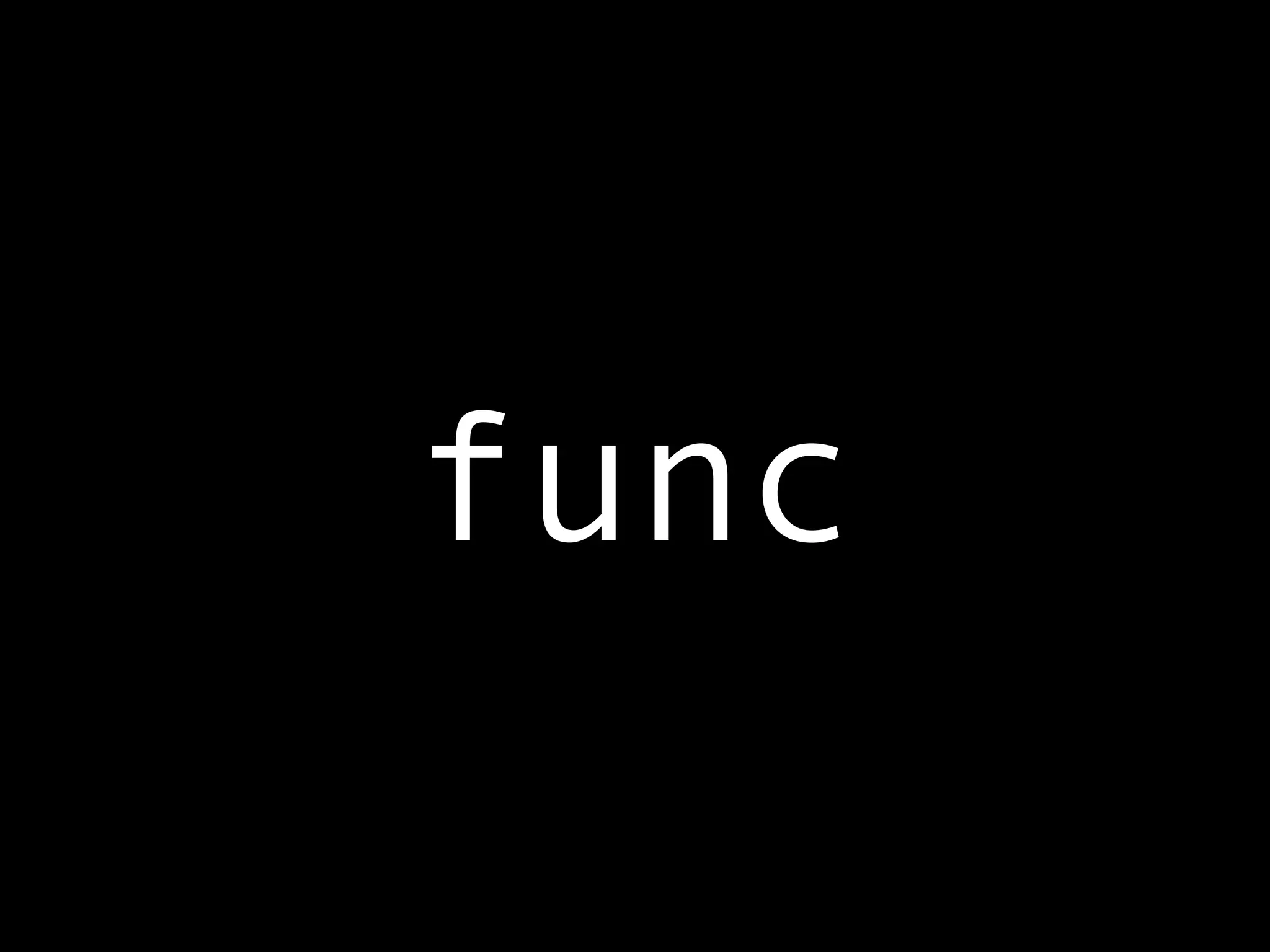
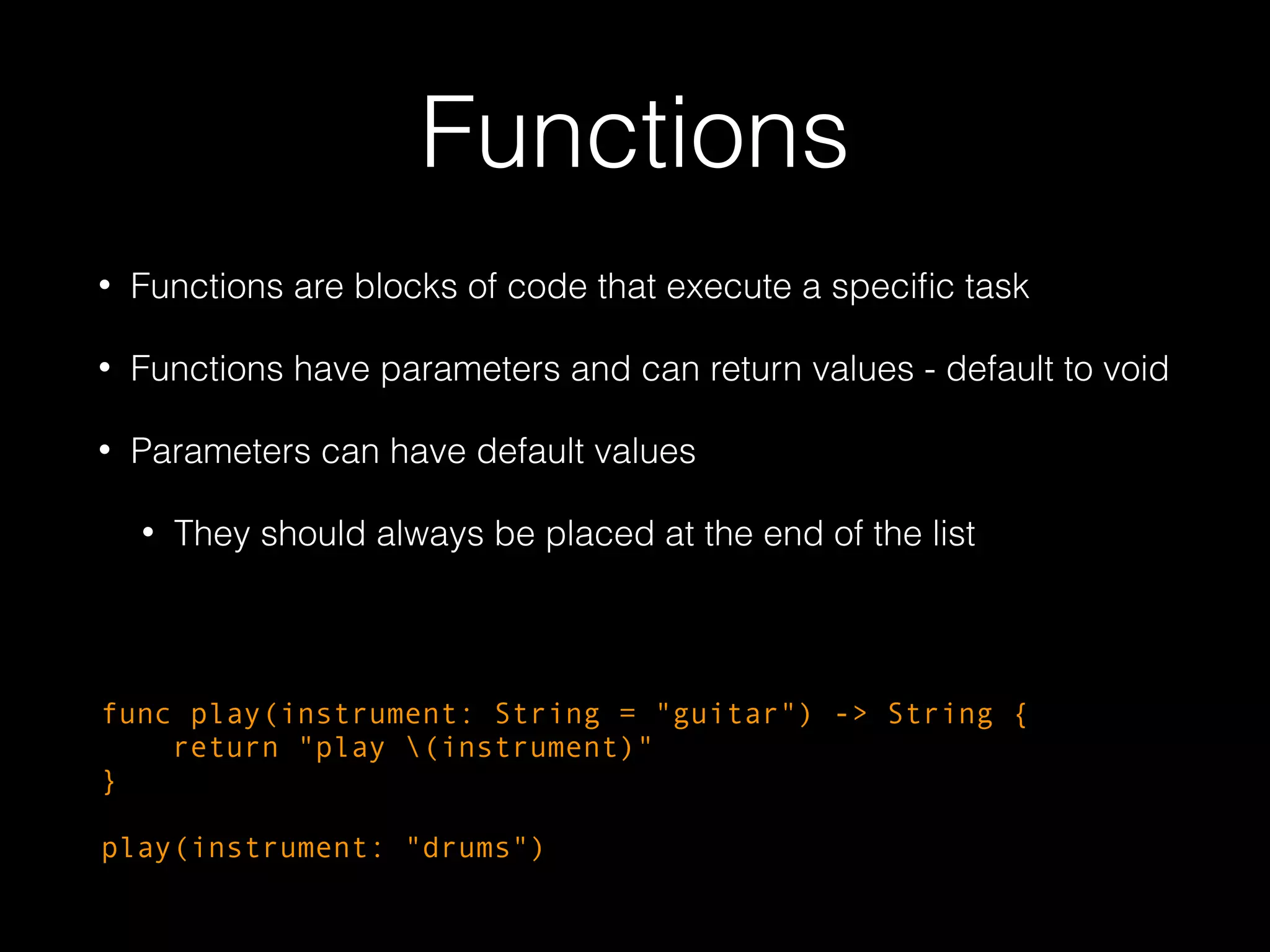
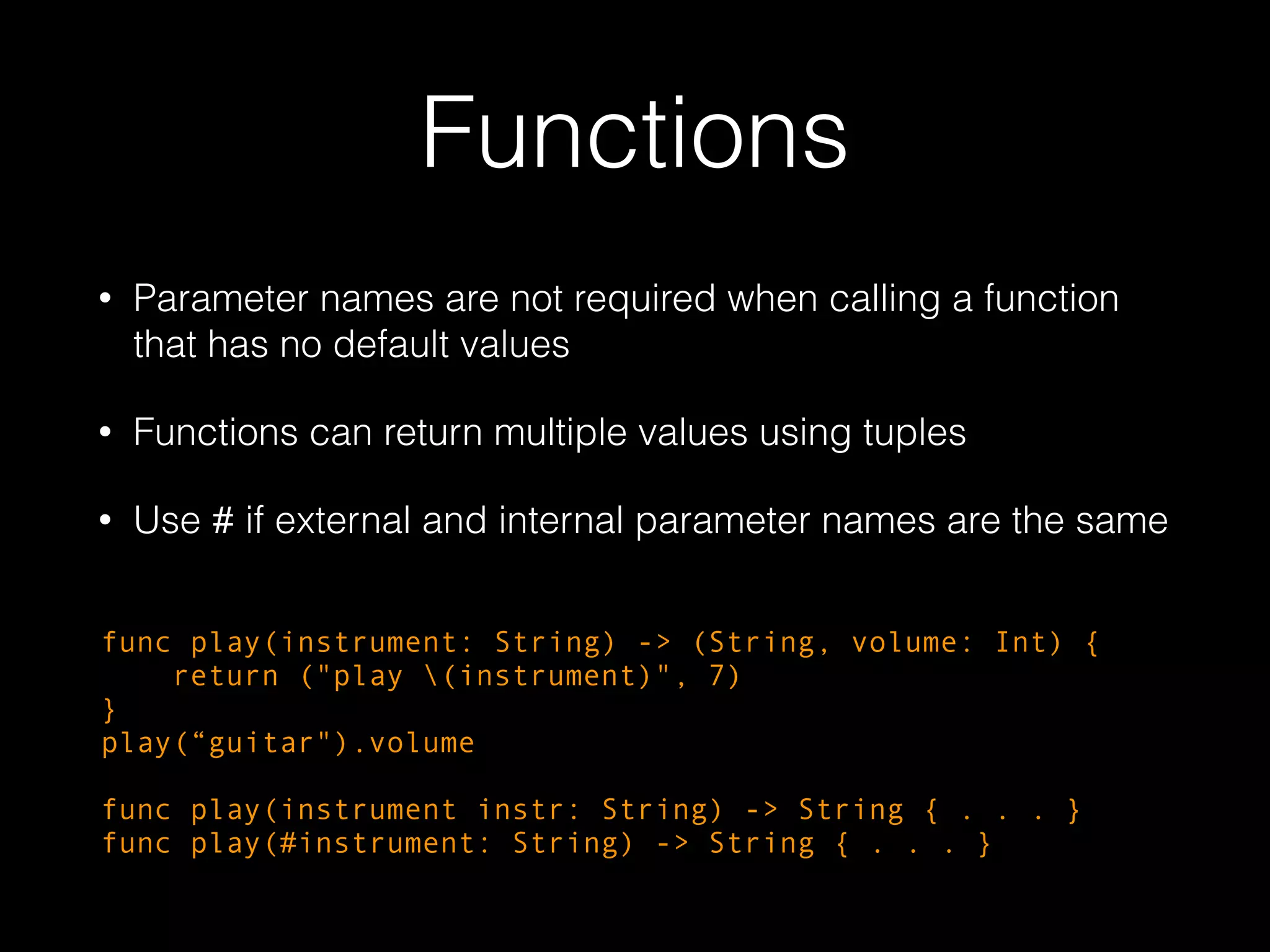
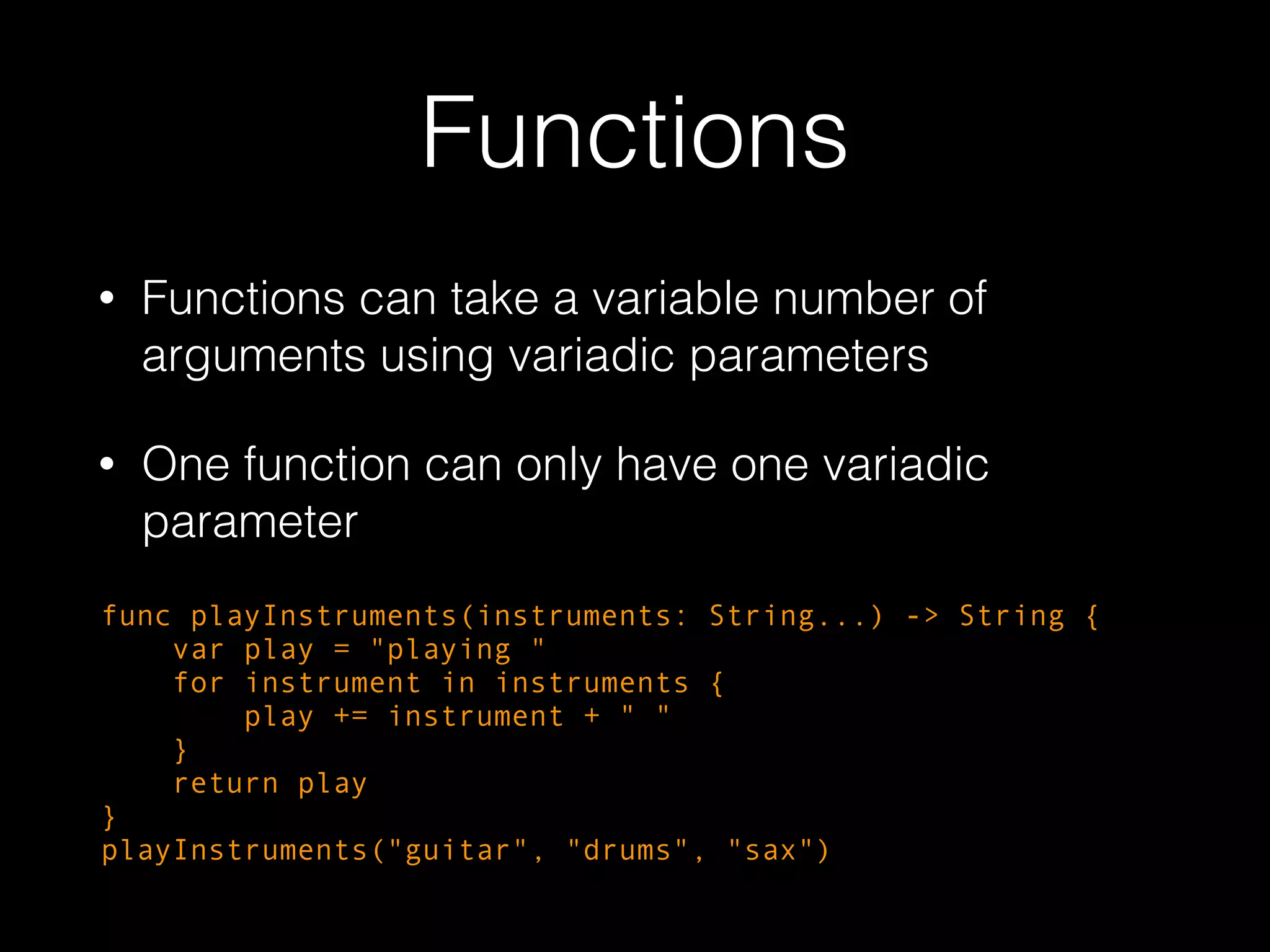
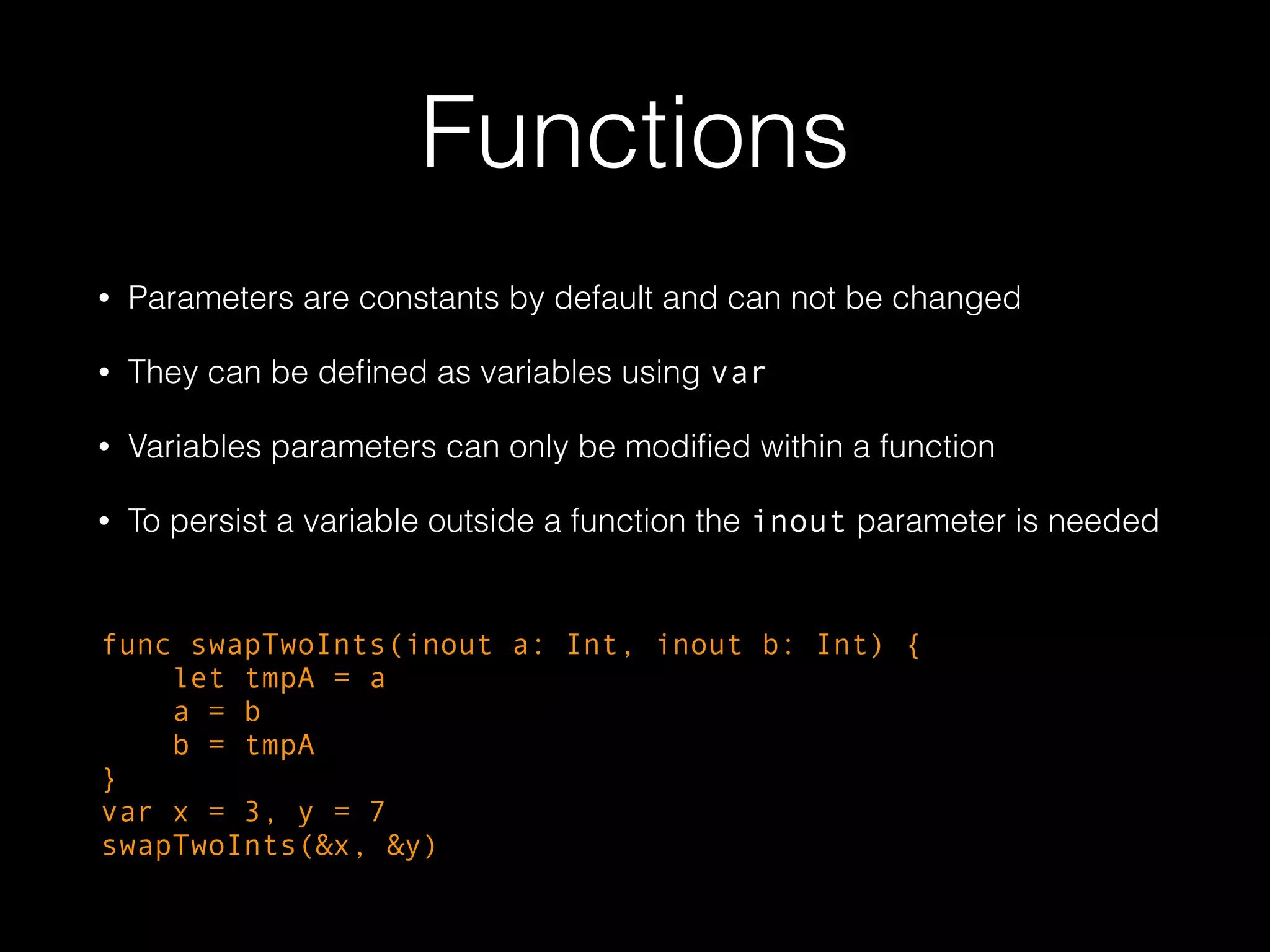
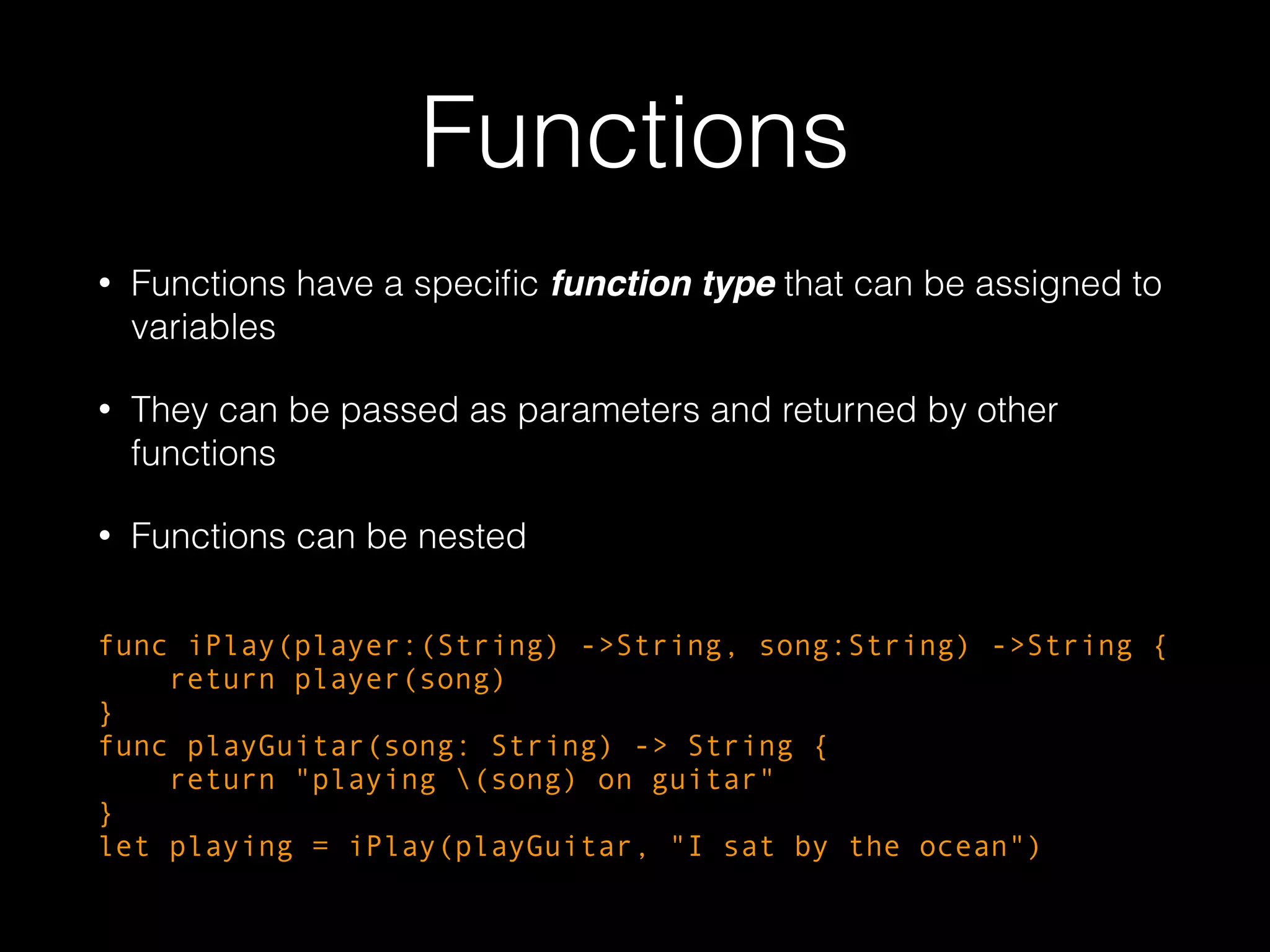
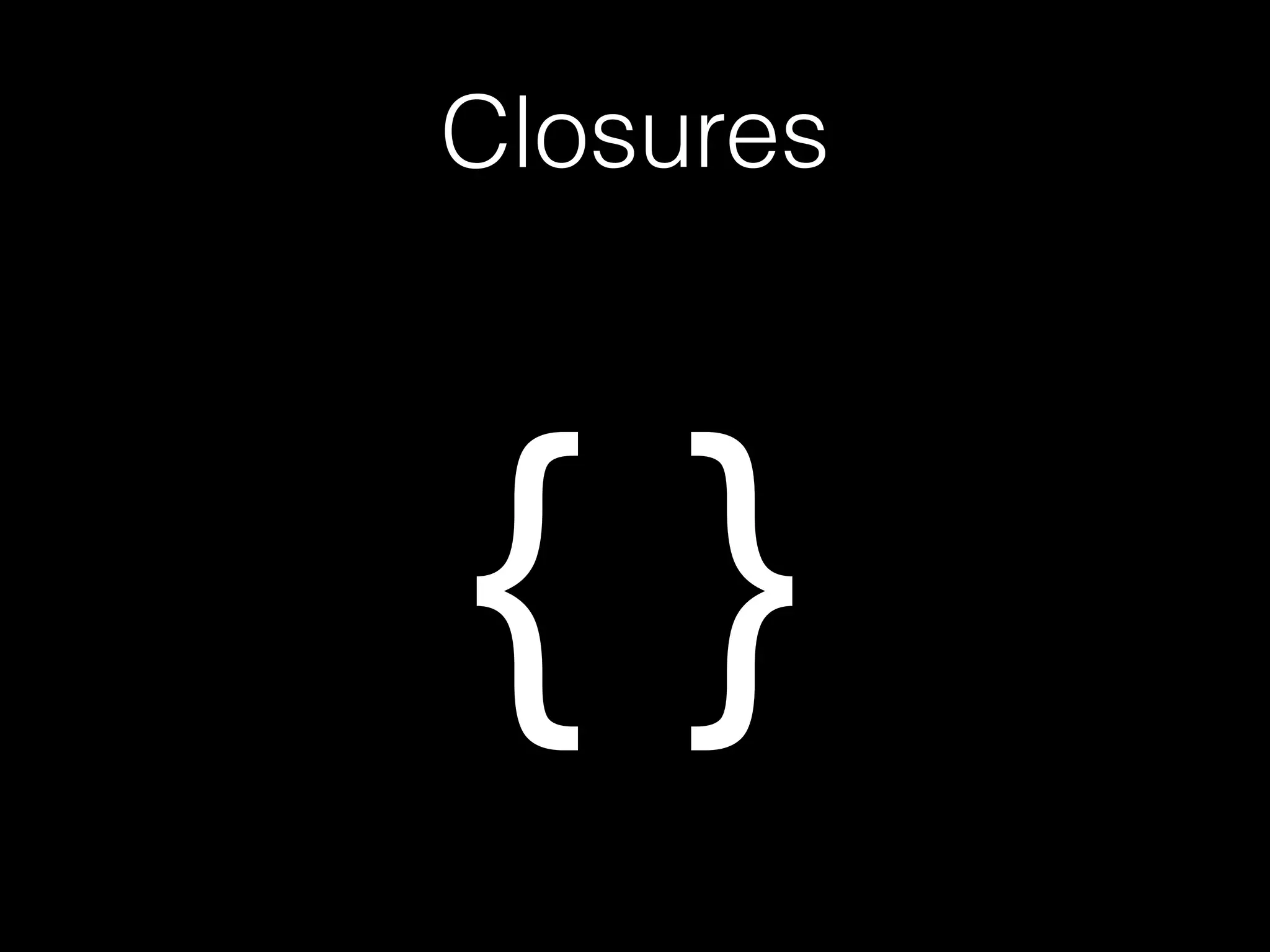
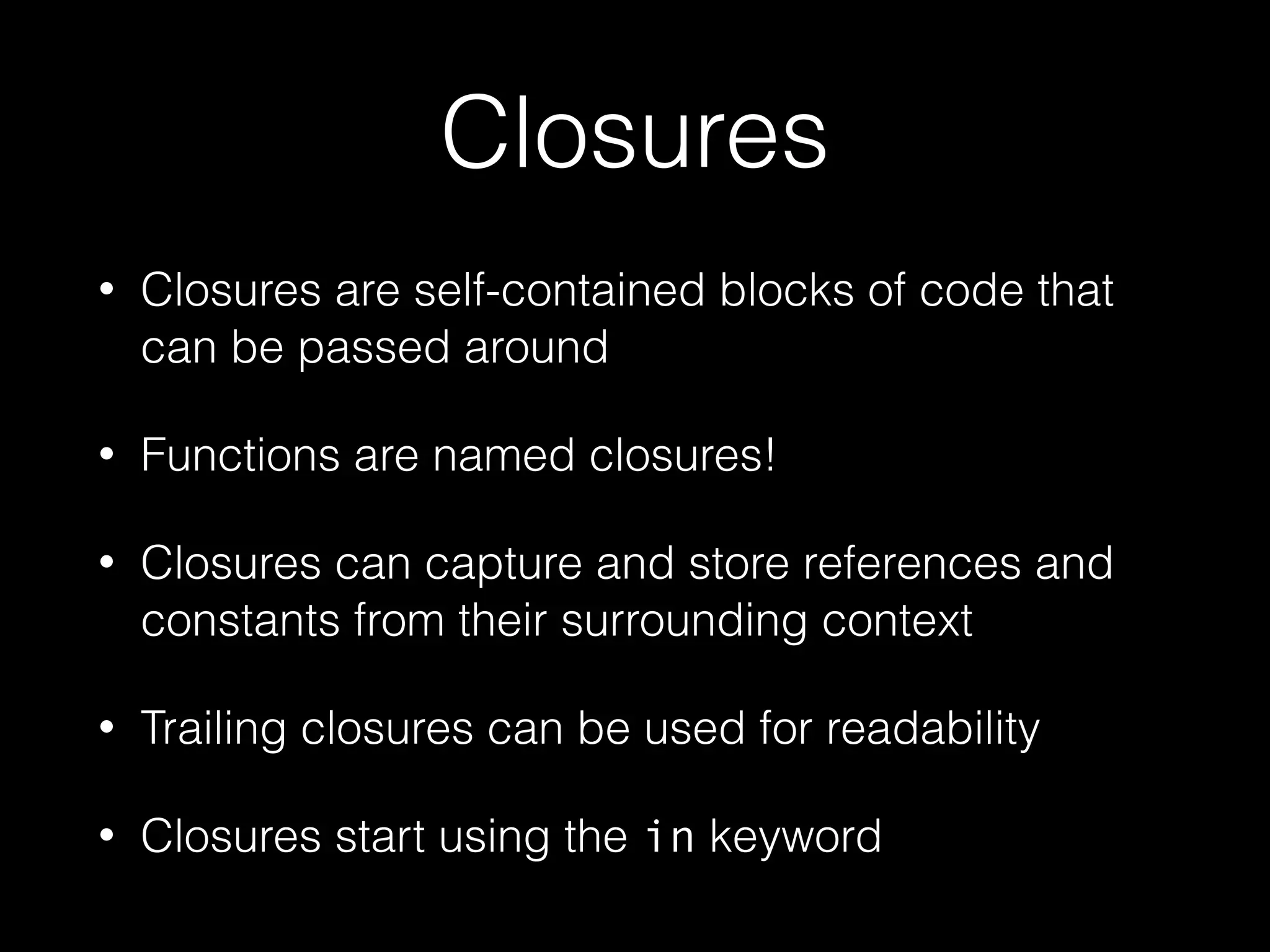
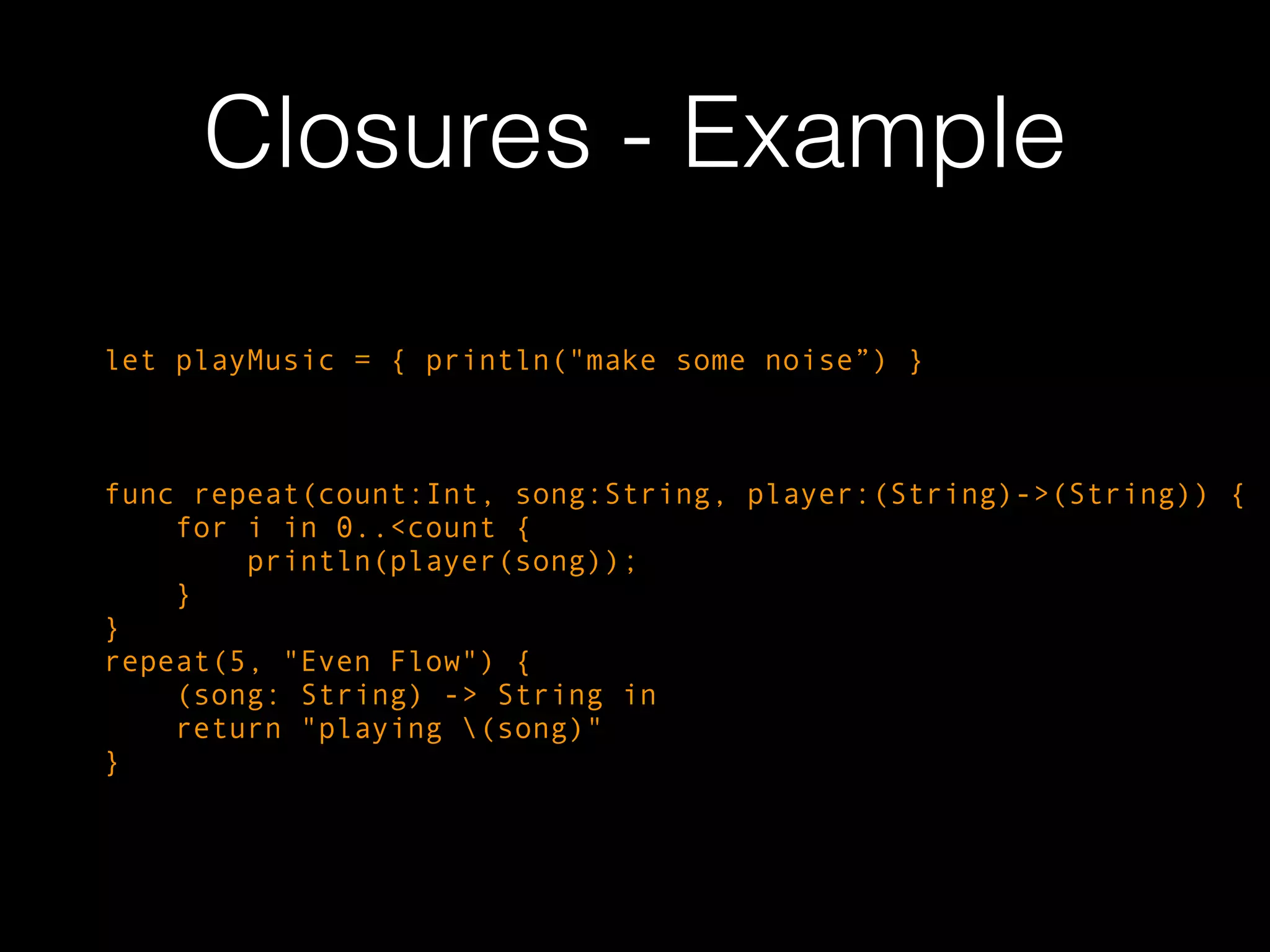
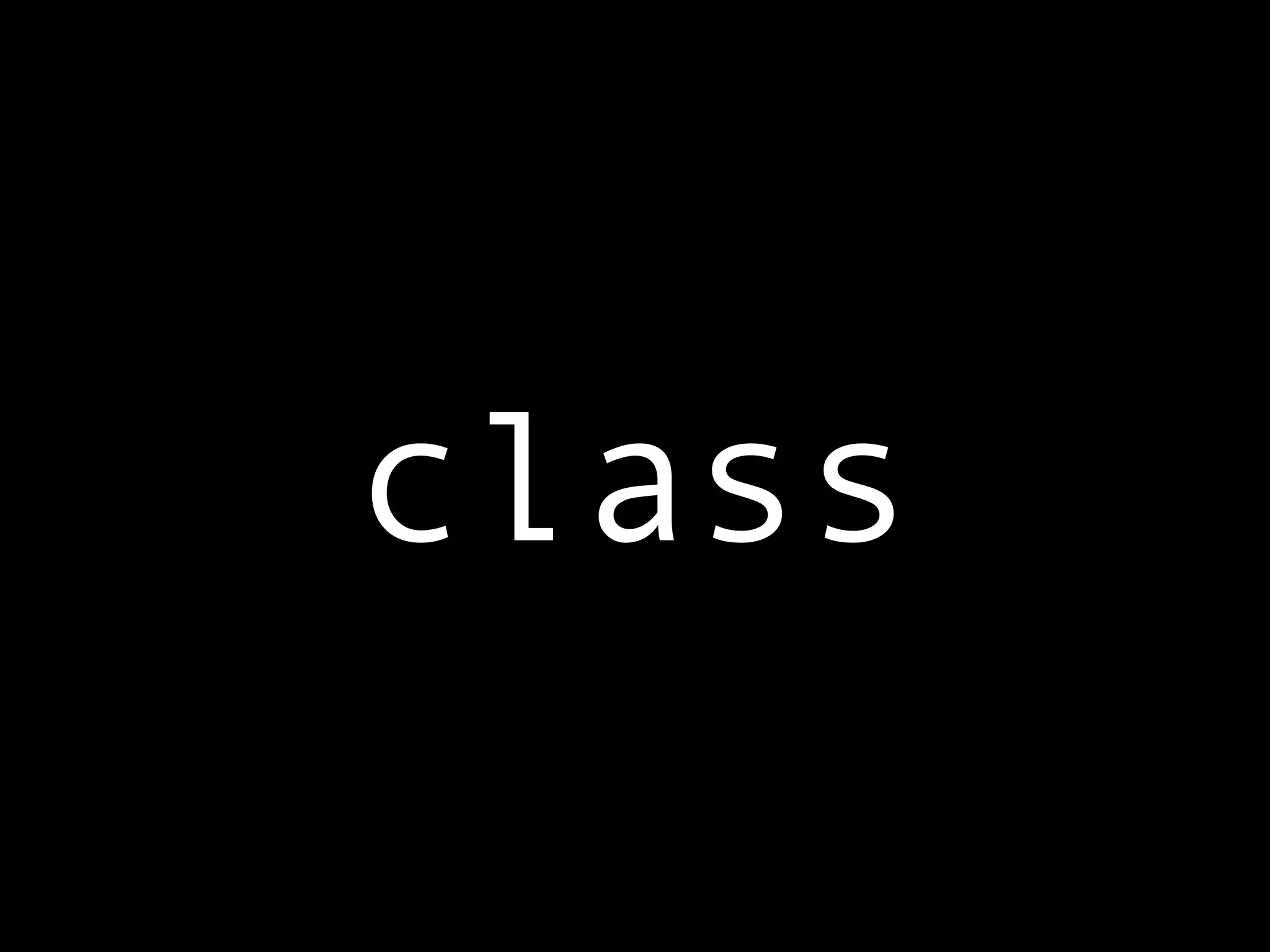
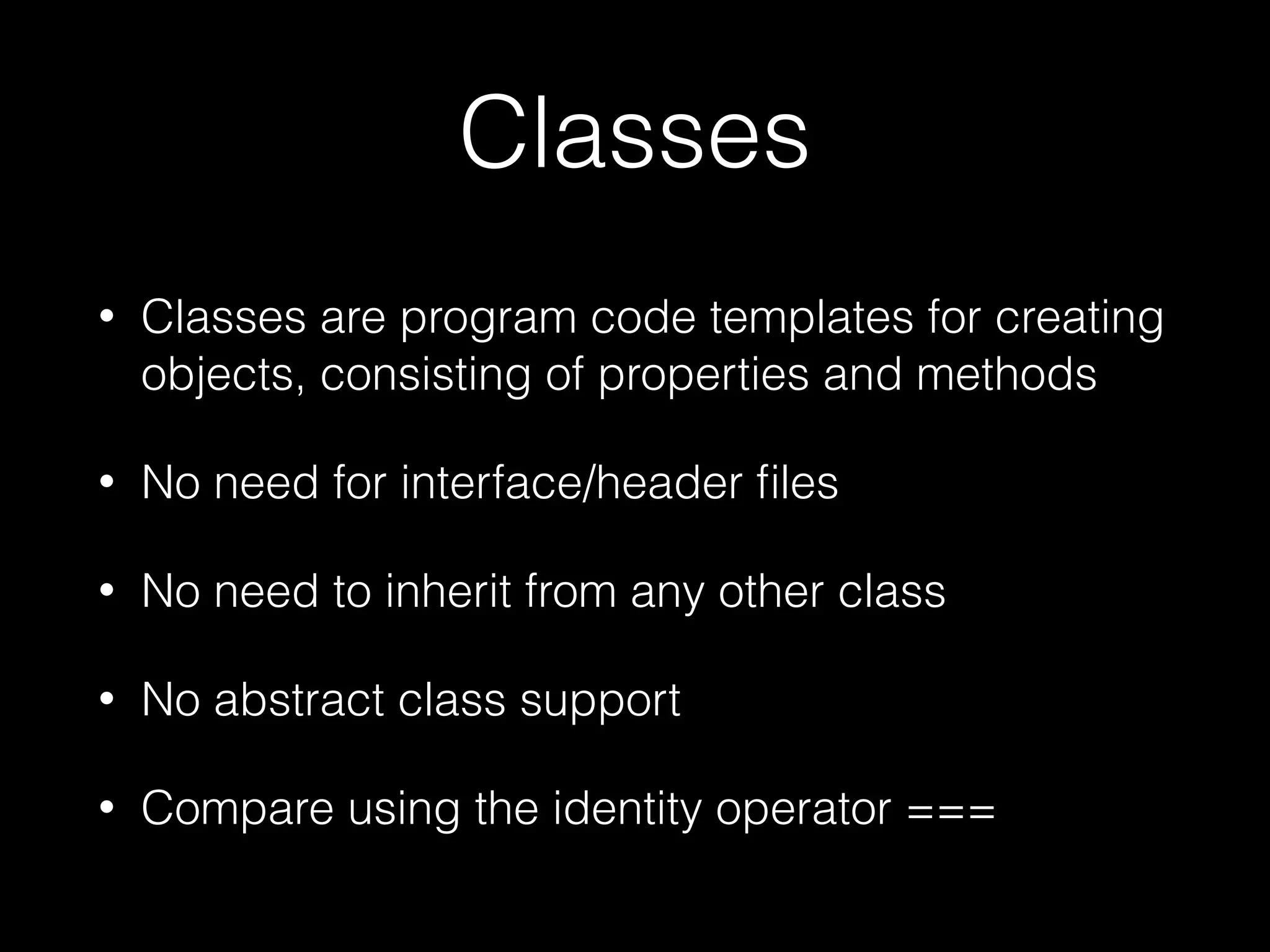
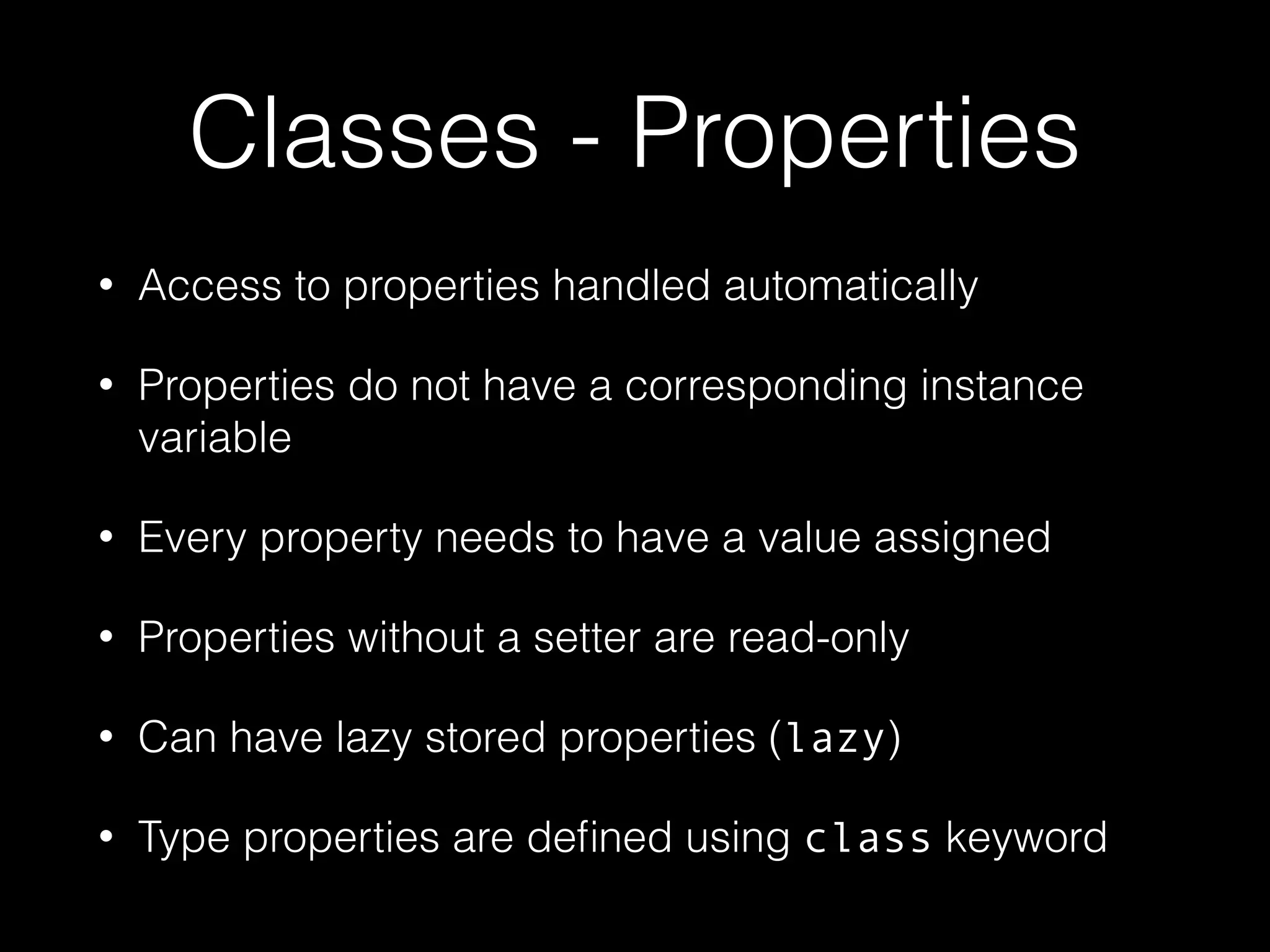
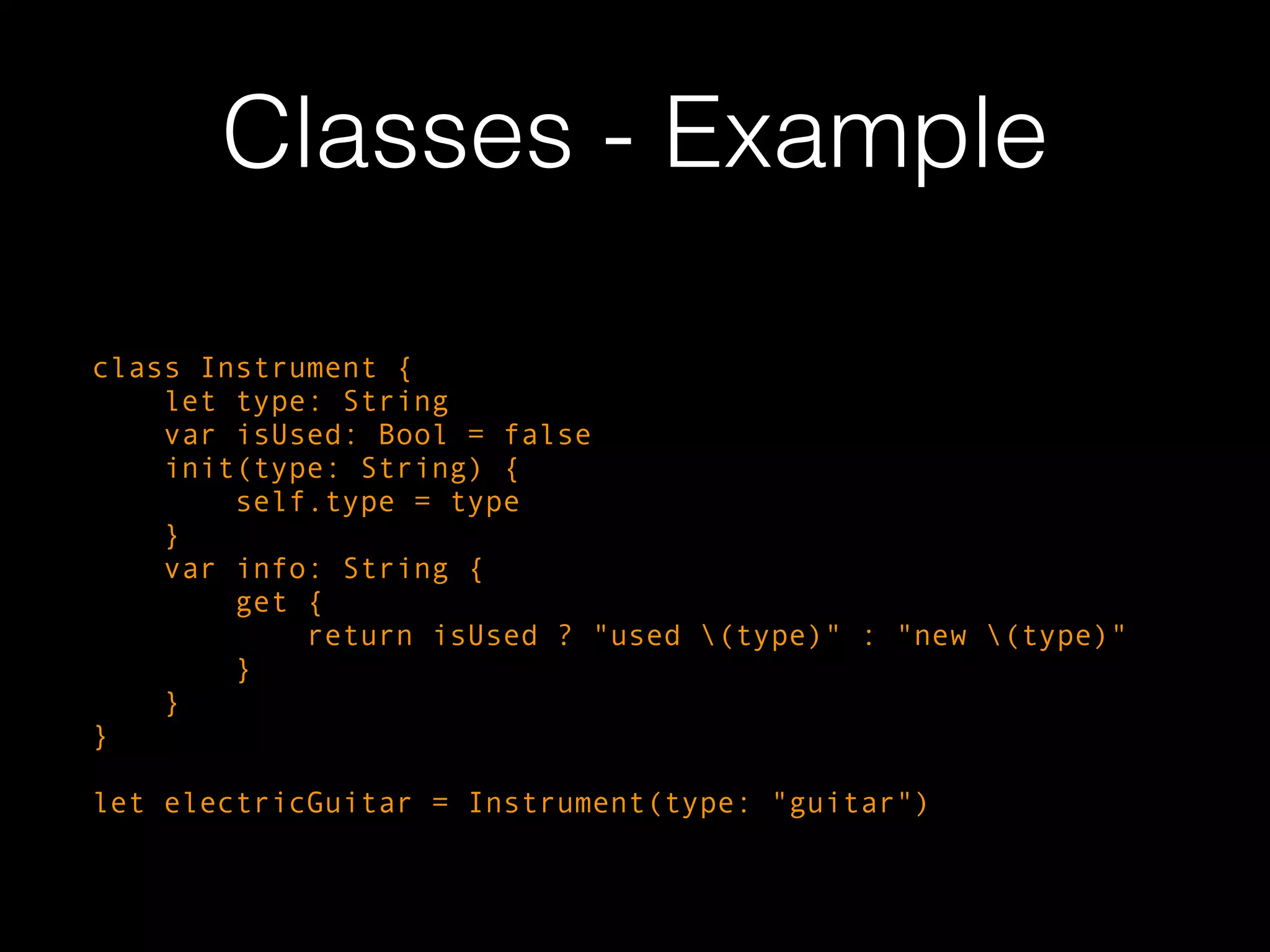
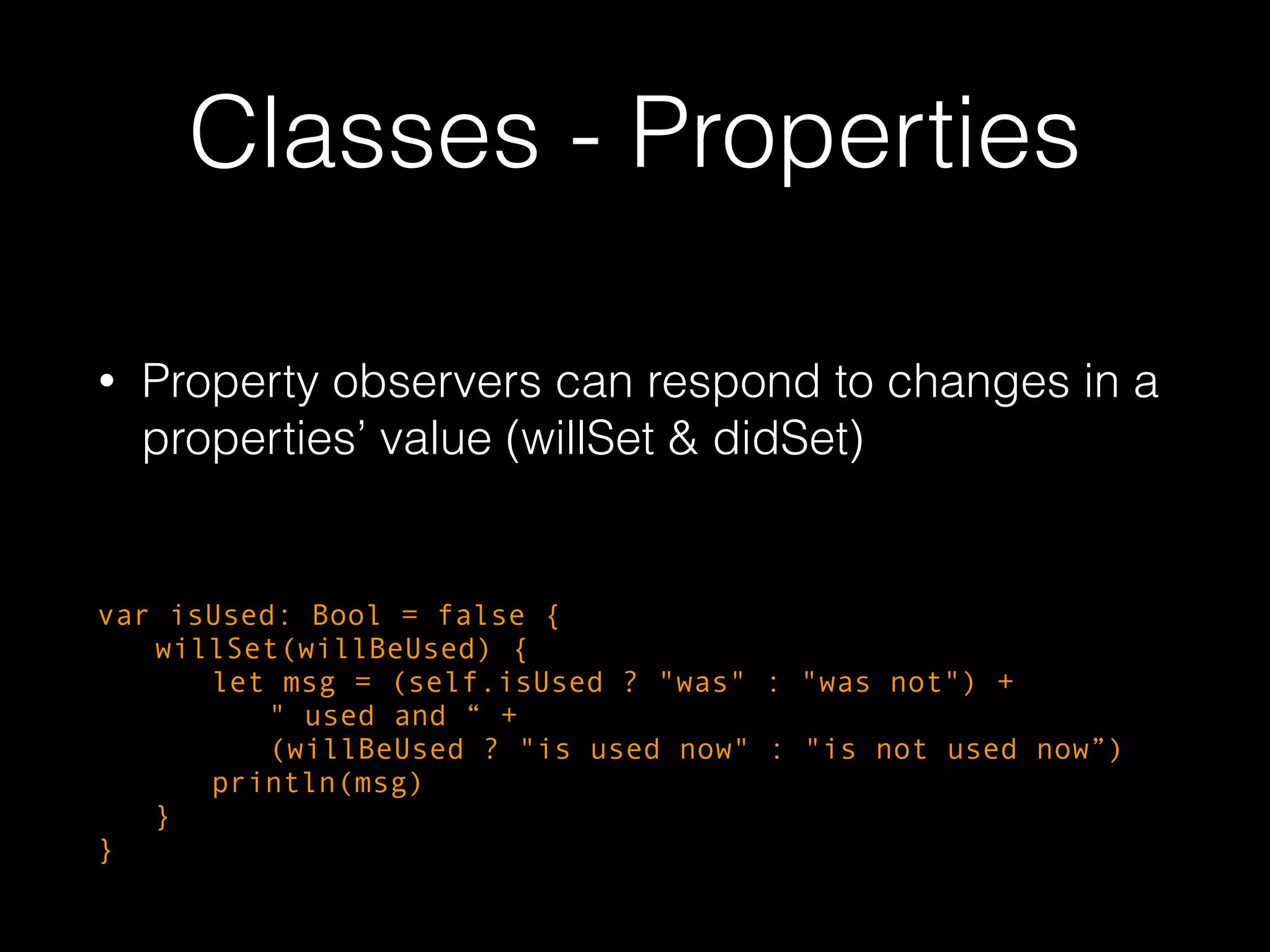
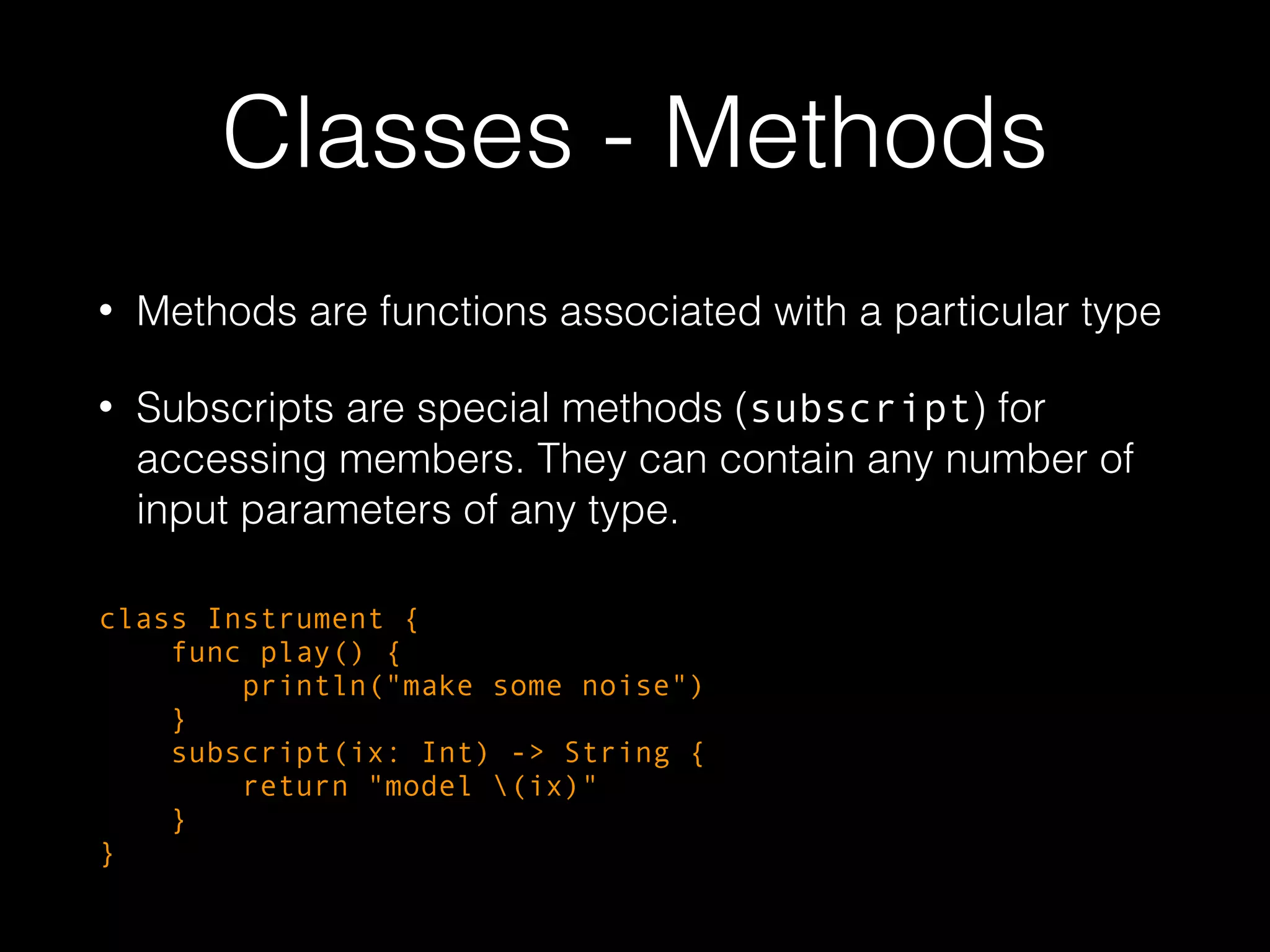
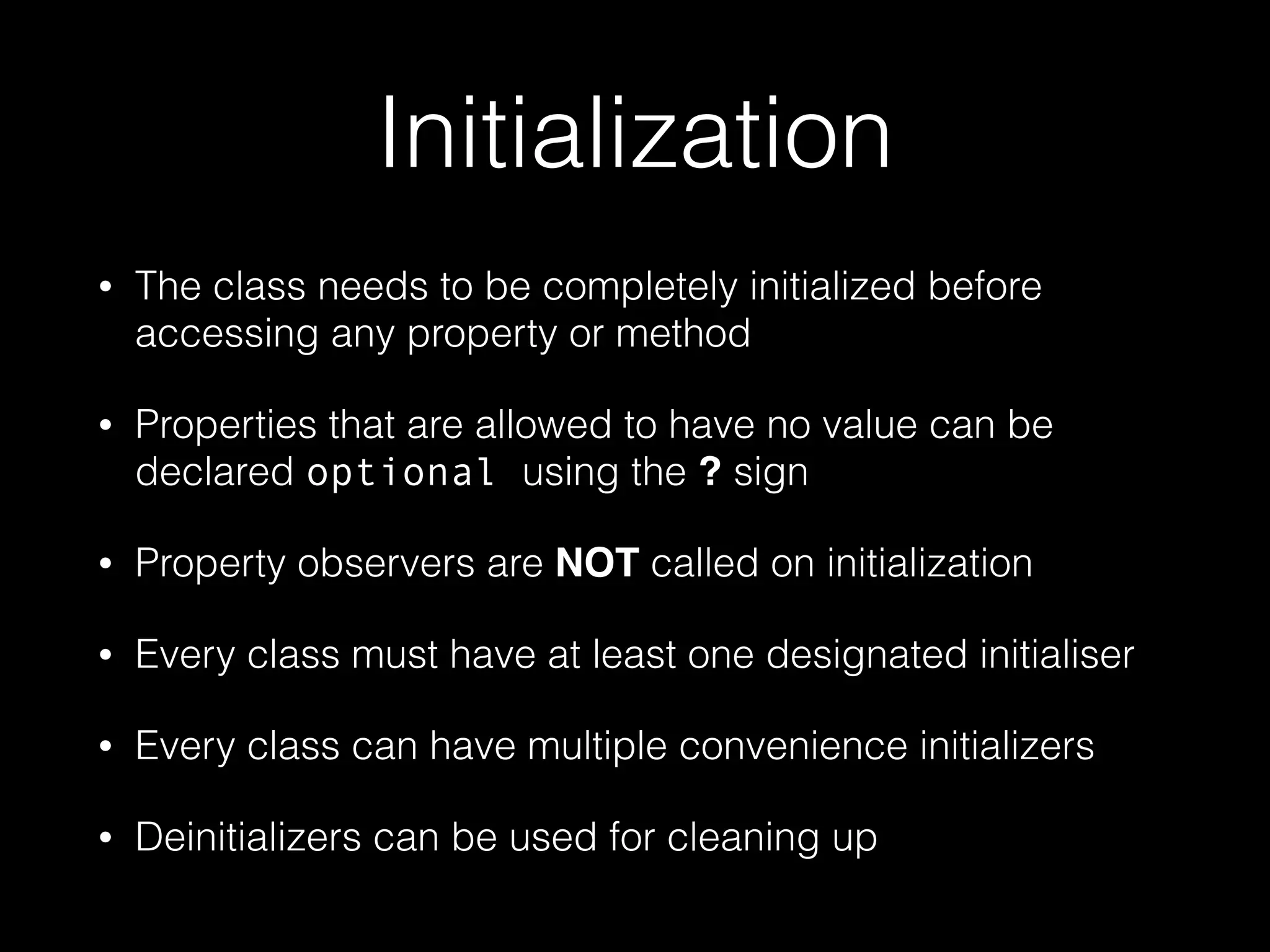
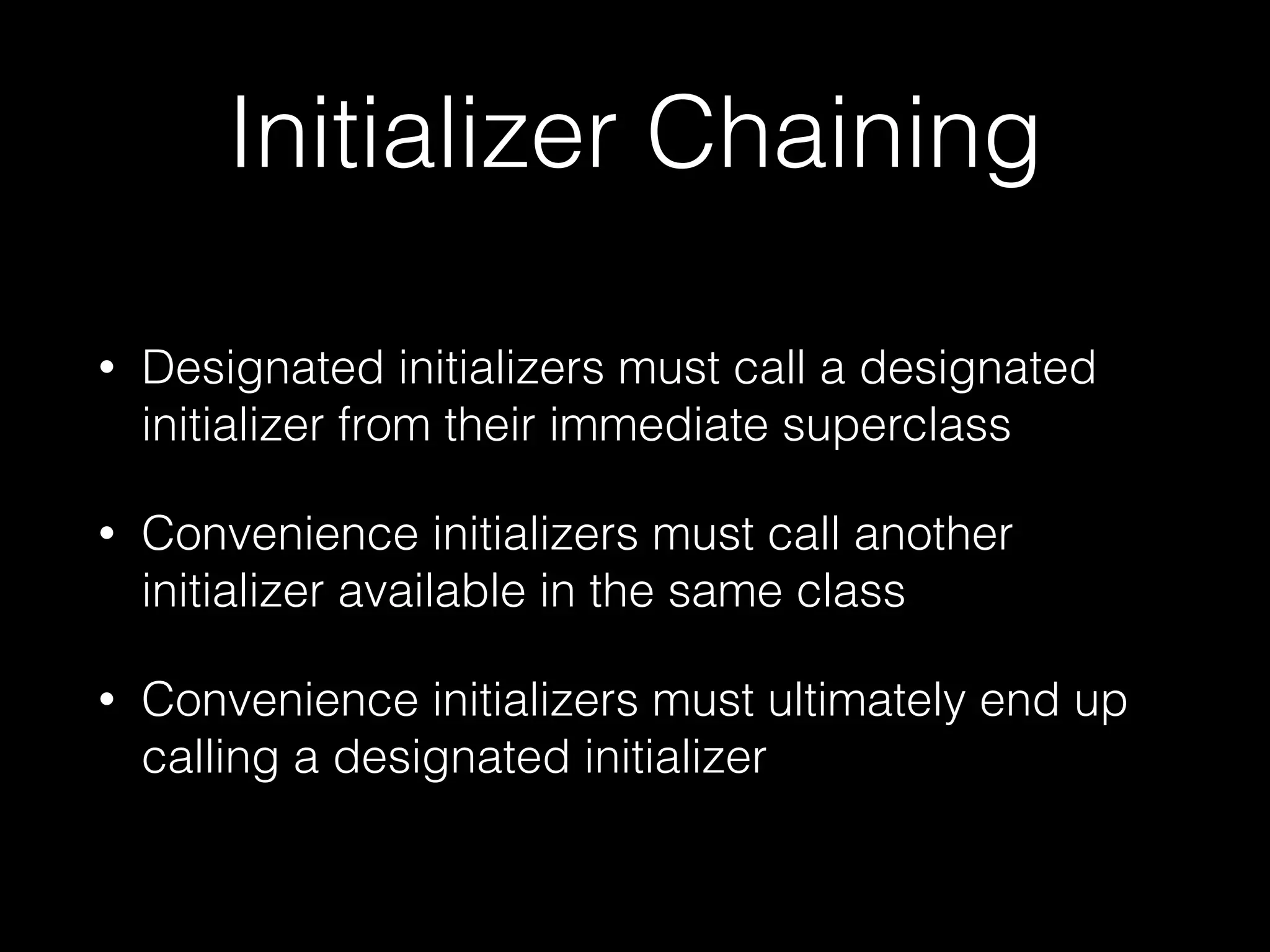
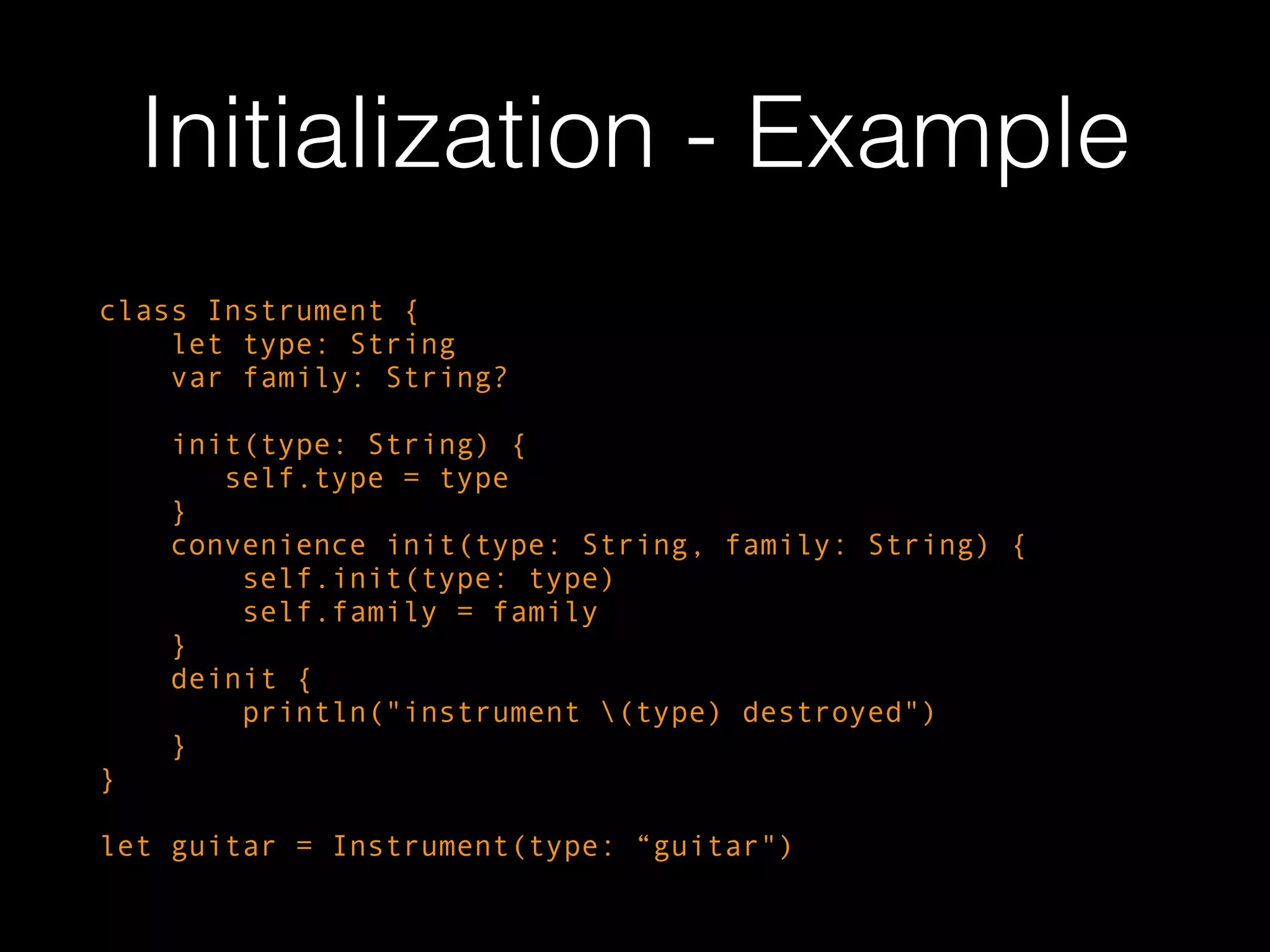
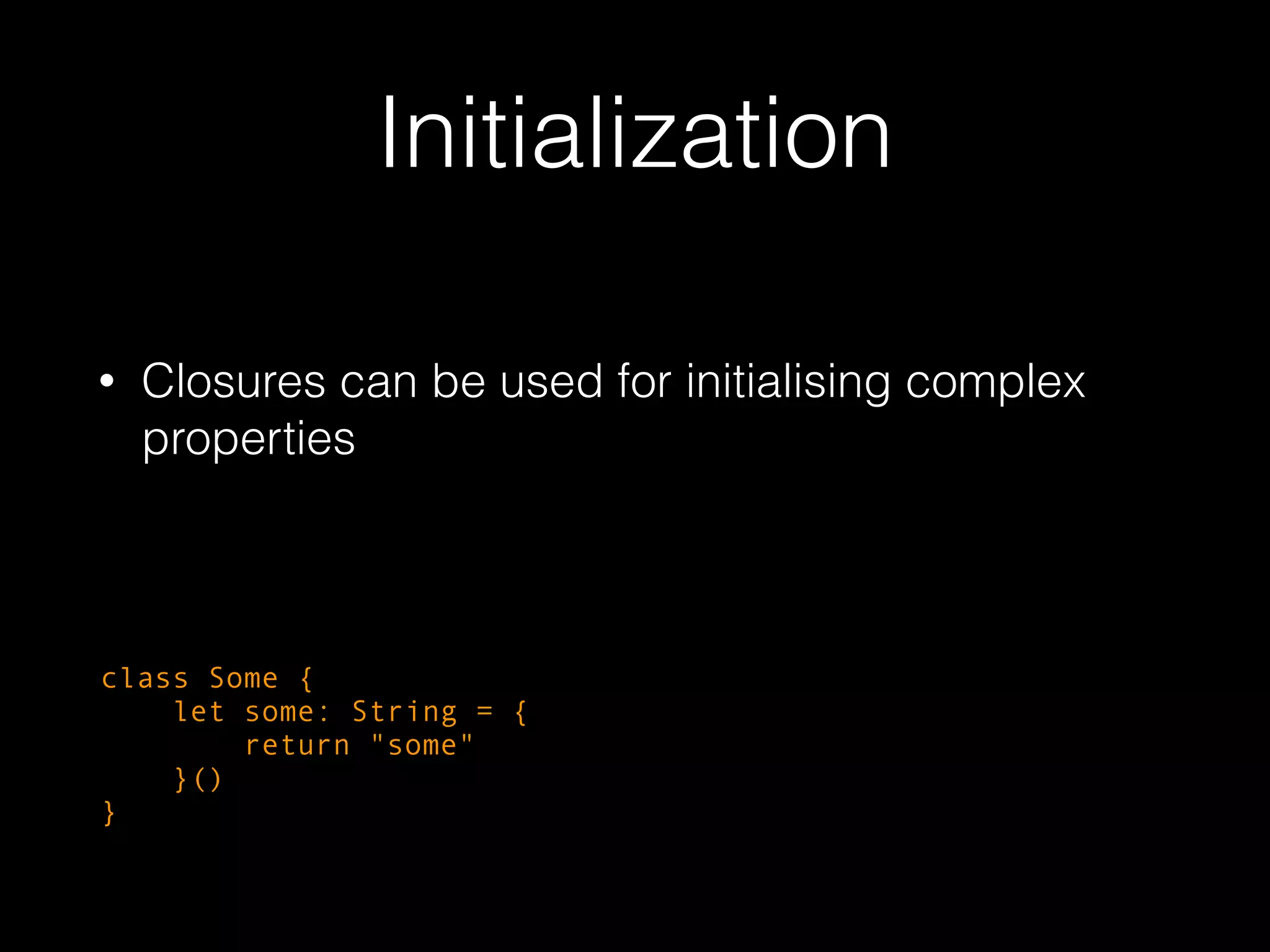
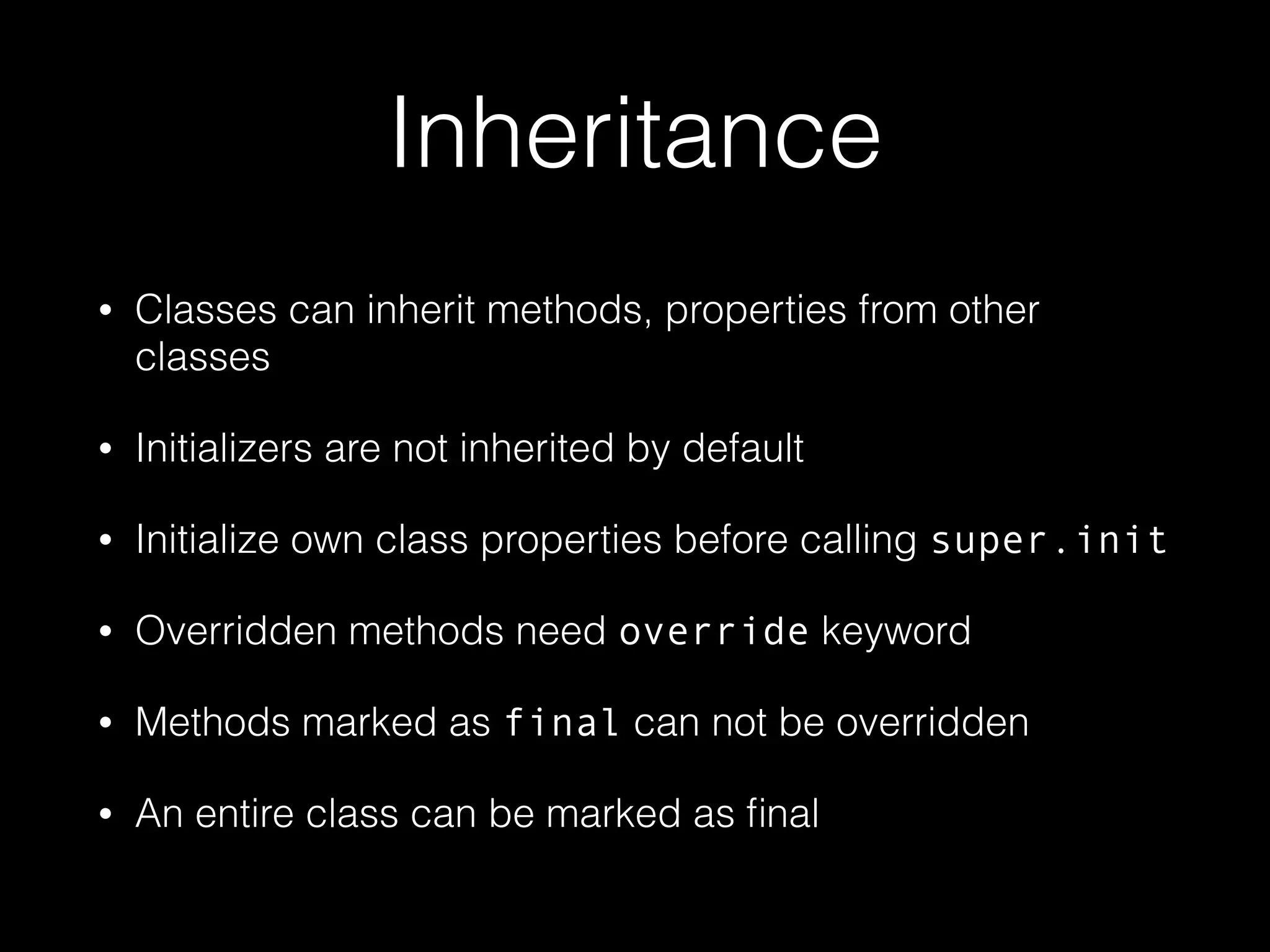
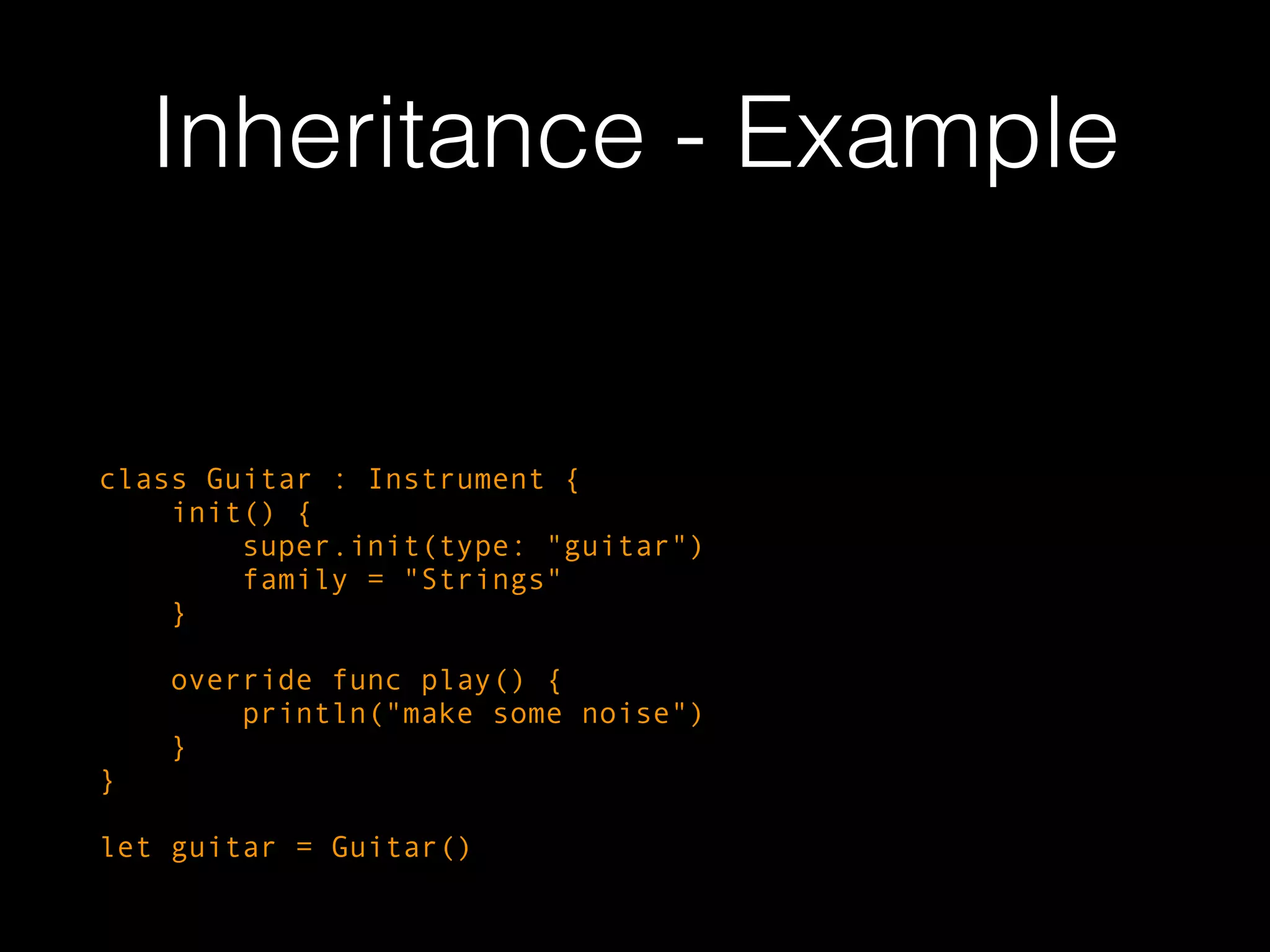
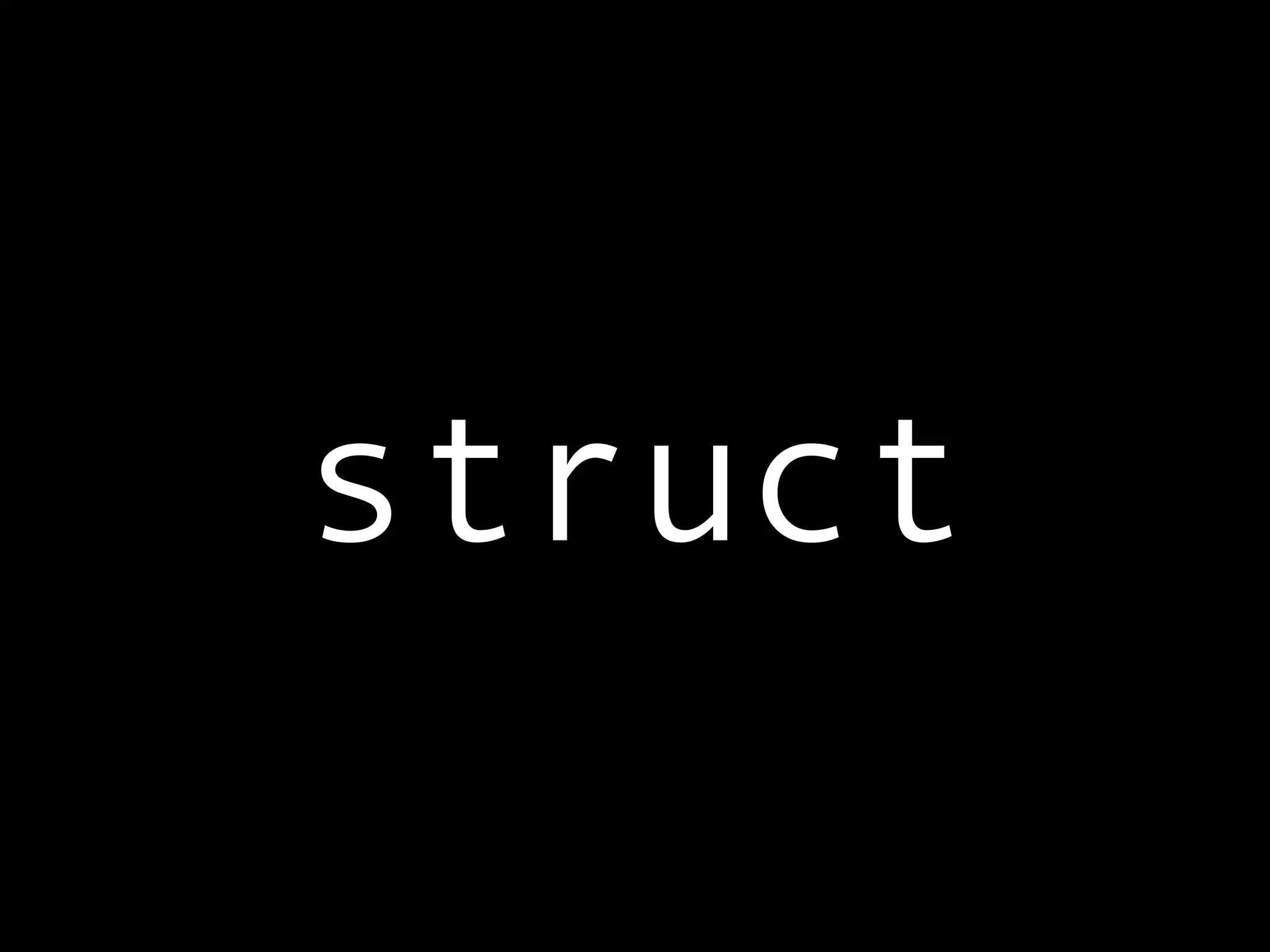
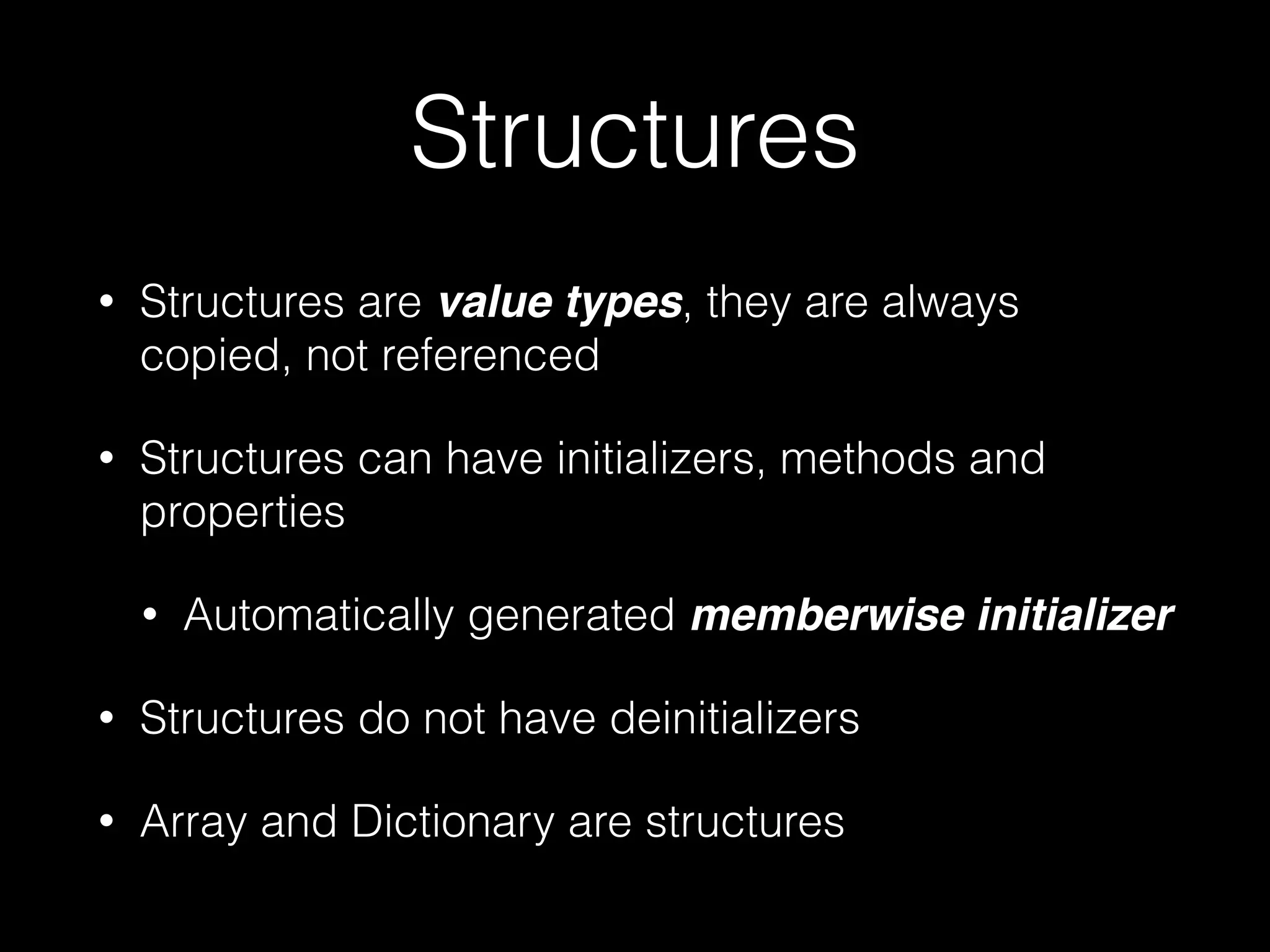
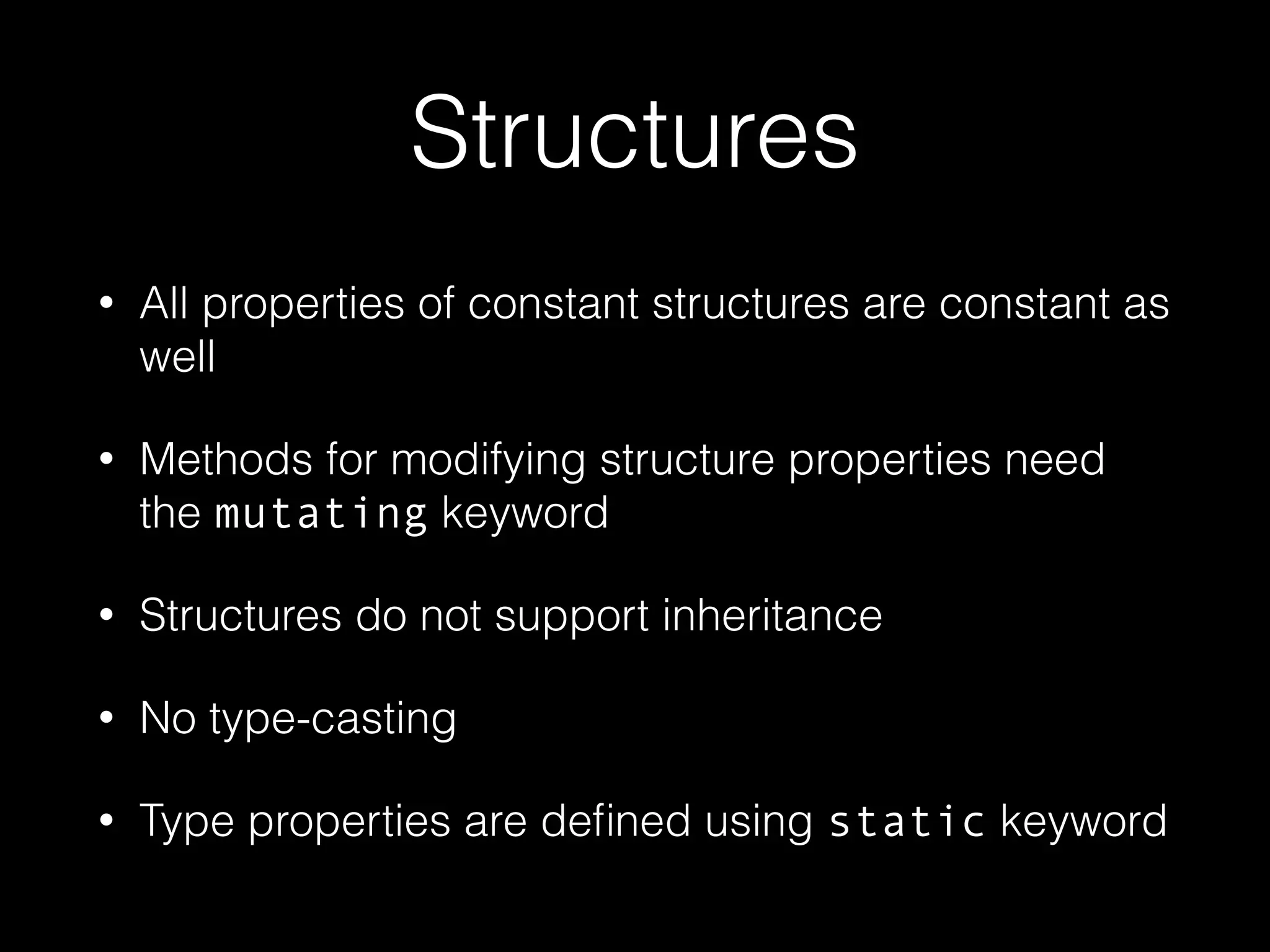
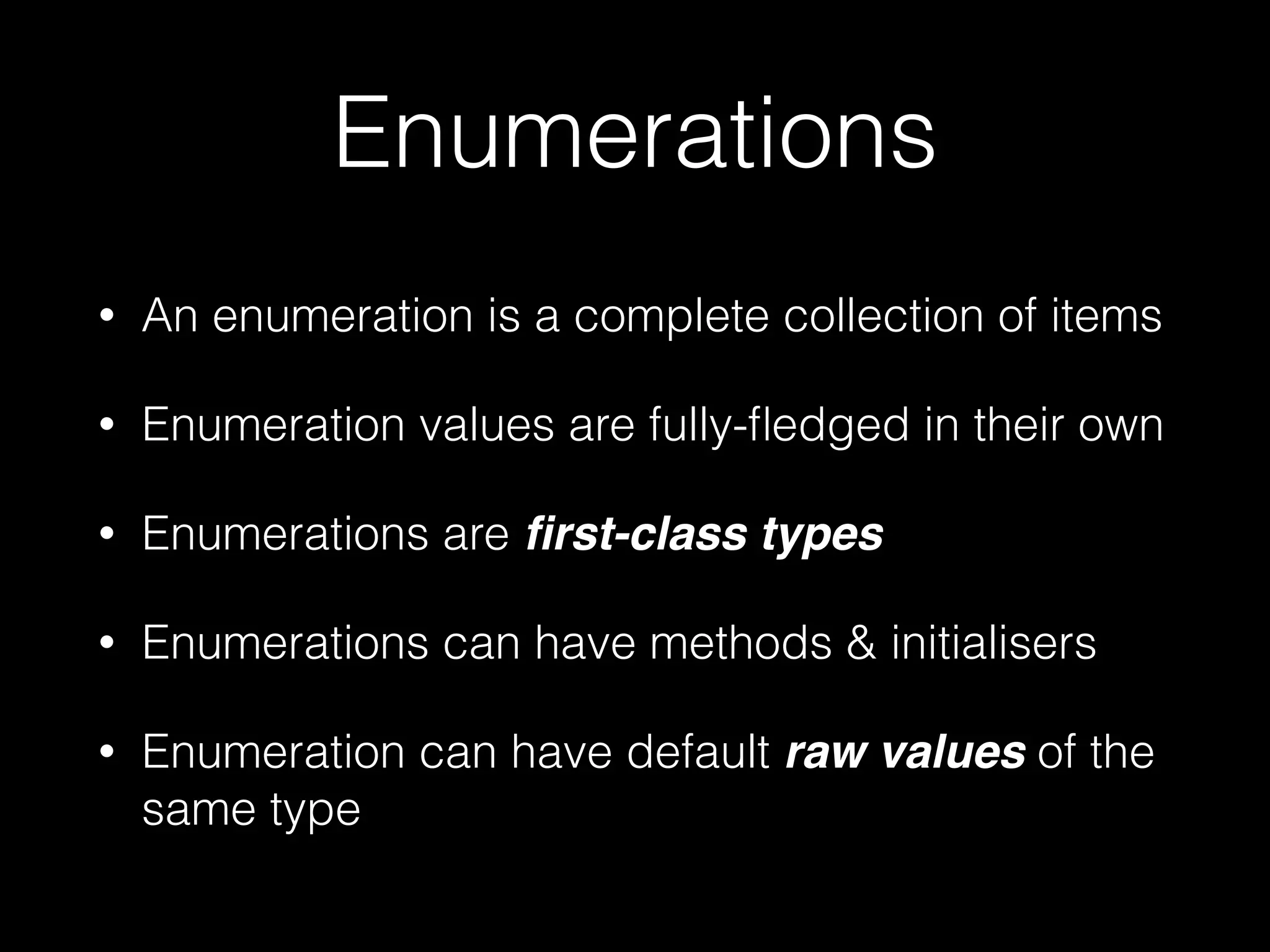
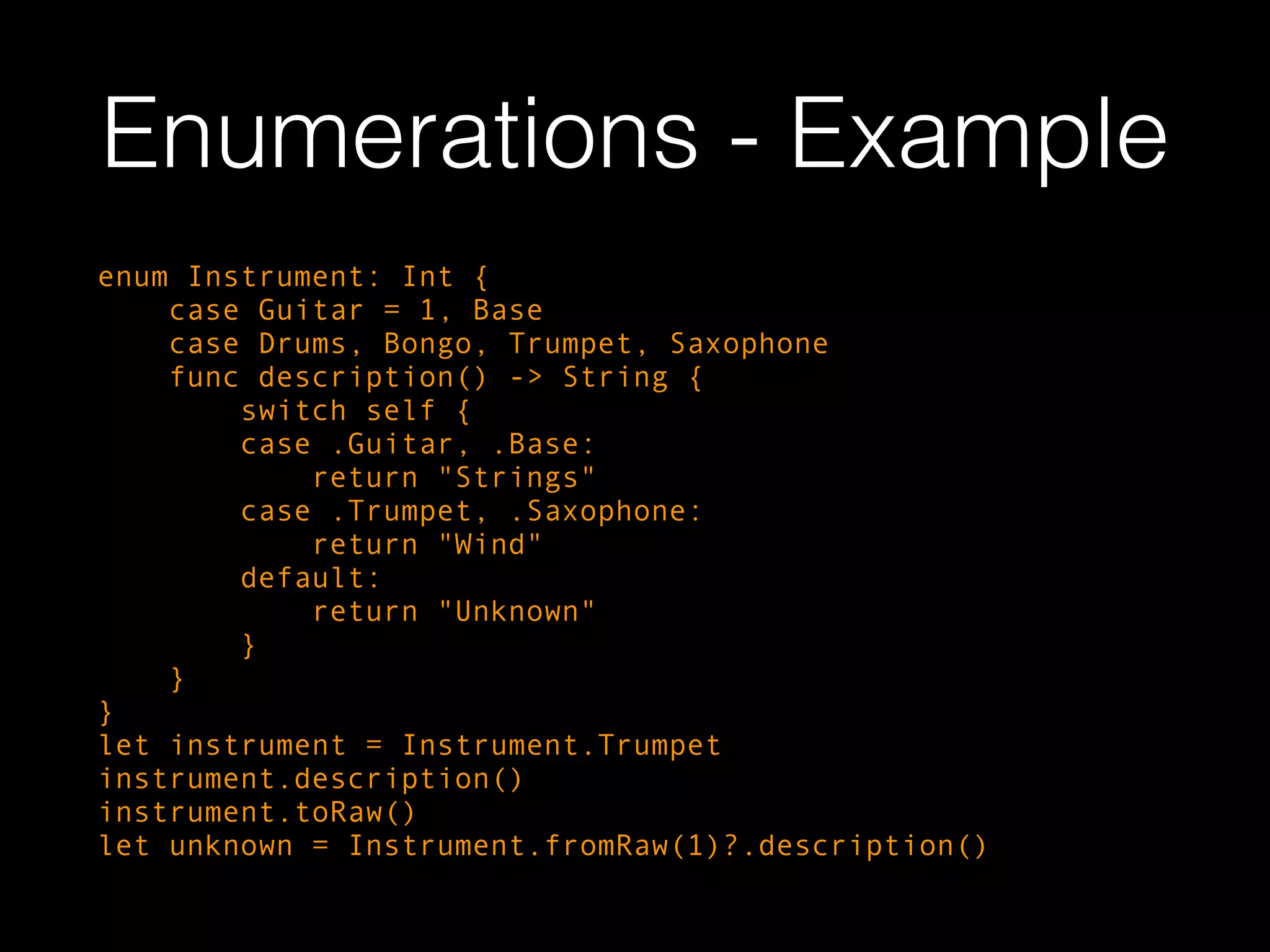
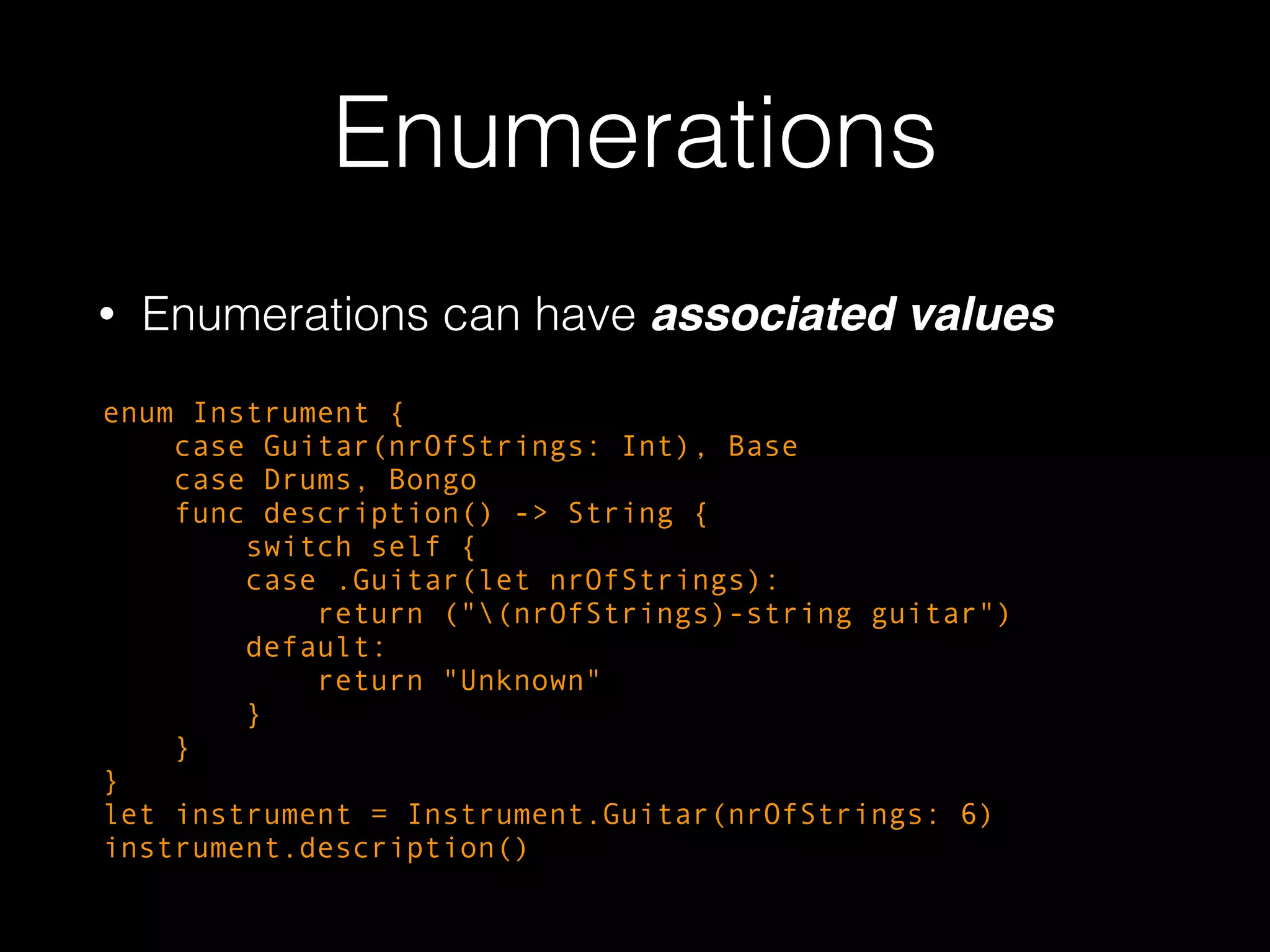

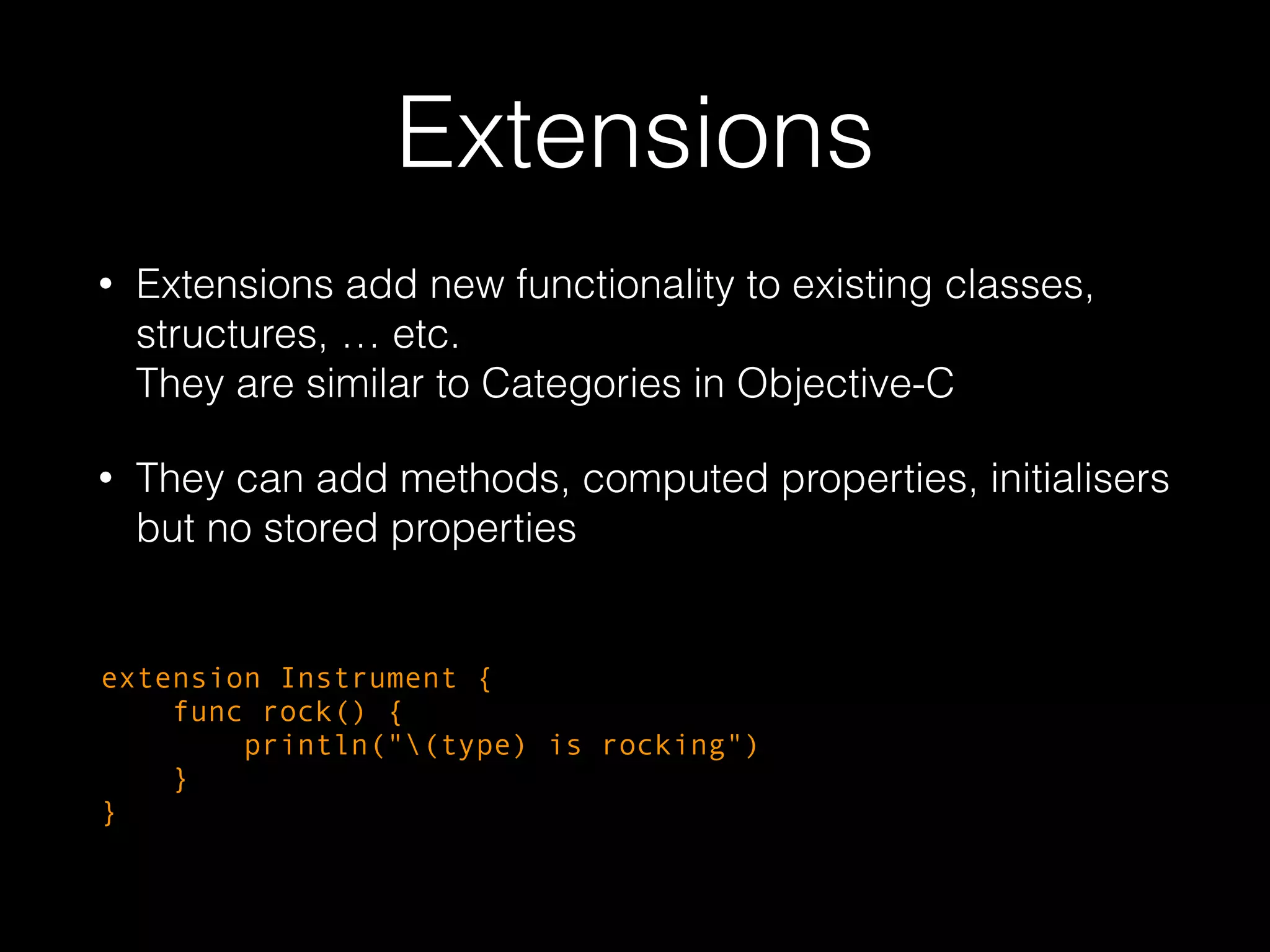
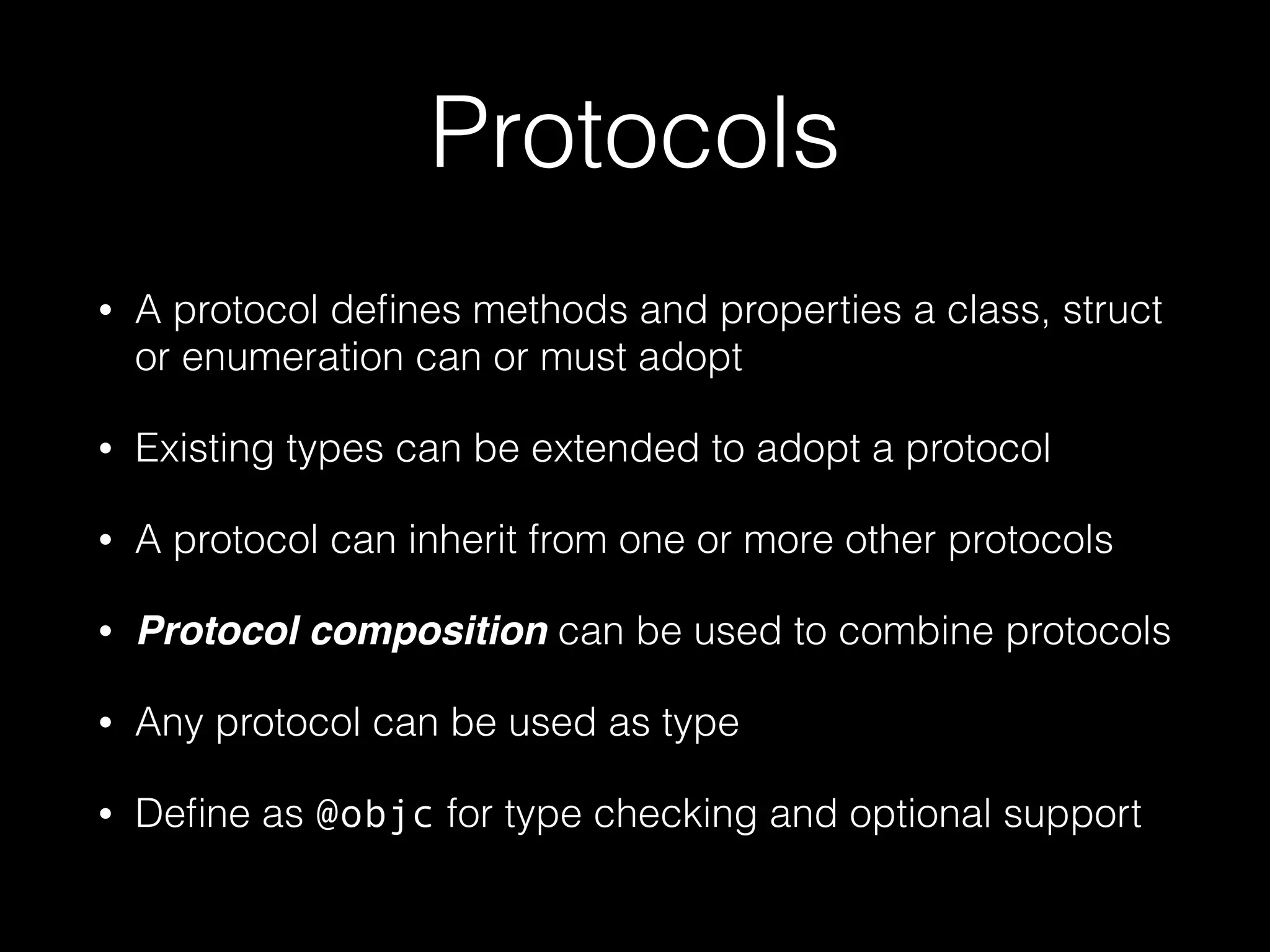
![Protocols - Example
@objc protocol Instrument {
func play()
}
!
class Guitar: Instrument {
func play() {
println("playing guitar")
}
}
!
let items = [Guitar(), NSString()]
!
for item in items {
if let instrument = item as? Instrument {
instrument.play()
}
}](https://image.slidesharecdn.com/nscoderswiftintroduction-141018181050-conversion-gate01/75/NSCoder-Swift-An-Introduction-to-Swift-52-2048.jpg)
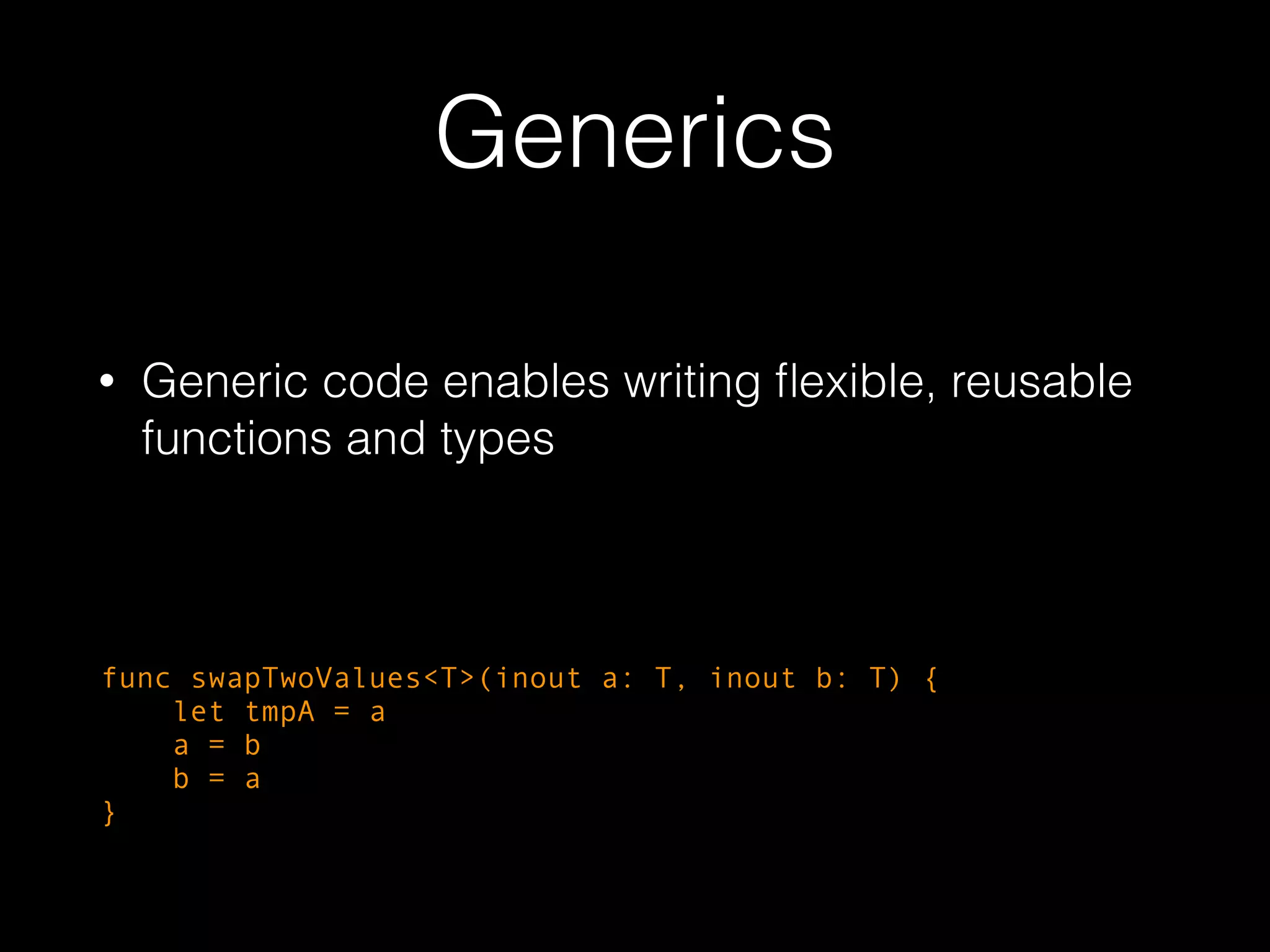
![Generics
• You can define your own generic type
• and specify type constraints
struct Stack<T: Instrument> {
var items = [T]()
mutating func push(item: T) {
items.append(item)
}
mutating func pop() {
items.removeLast()
}
}
var guitarStack = Stack<Guitar>()](https://image.slidesharecdn.com/nscoderswiftintroduction-141018181050-conversion-gate01/75/NSCoder-Swift-An-Introduction-to-Swift-54-2048.jpg)
